|
Every now and then, I receive wine samples from producers that I have written about previously. They might be new vintages, new blends, or an introduction to a new brand. Because I always like to tell a story about the winery, history, the land, the winemaker, etc. along with my review, it can get a little repetitive. With that in mind, please select from the menu at right for a more in-depth look at Domaine Bousquet, Argentina’s largest exporter of organically grown wines. The winery is located in the Gualtallary Valley, situated high up in the Tupungato district of the Uco Valley. Altitudes here reach up to 5,249 ft. Domaine Bousquet has an impressive portfolio of wines that include their nicely priced Gaia collection. I have reviewed several wines from the Gaia line, but here are two new and noteworthy red wines from this collection. The label for these wines is a striking portrayal of Gaia, who in Greek mythology is the mother goddess presiding over the earth. It is a fitting name for wines produced from all organic grapes! Gaia Cabernet Franc 2018 This vintage is 100% Cabernet Franc. Grapes are hand-harvested from vineyards that sit at 4000 ft. altitude. The wine is aged in French oak for ten months. It is quite aromatic with notes of dark berries, plum, and floral. The palate offers blackberry, dark plum, pomegranate, spice, and a hint of minerality. Medium tannins and acidity round out this juicy wine. Serve with grilled meat, hearty stews, cheese, and chocolate desserts. Alcohol: 15% SRP: $20 Gaia Cabernet Sauvignon 2018
Grapes for this 100% Cabernet Sauvignon are hand-harvested from vineyards that sit at 4000 ft. altitude. This wine is aged in French oak between eight and ten months. Intense aromas of dark berries, dark cherry, vanilla, and a touch of minerality set the stage for this expressive wine. The palate offers red and black berries, dark plum, baking spice, and a hint of chocolate. This is another juicy wine with beautiful structure, smooth tannins, and a lengthy finish. Serve with grilled meat, seared tuna, hearty pasta, and cheese. Alcohol: 15% SRP: $20 Until next time… Cheers! Penina To leave a comment or if you have an inquiry, please contact me at [email protected] “It’s the friends we meet who help us appreciate the journey”. Mon Frère Winery Mon Frère means ‘my brother’ in French, and the Mon Frère Winery dedicates their three wines to special and rare friends who feel like family. Located in Napa, CA, the winery is a partnership between legendary winemaker, Tom Hinde and family-owned wine and spirits organization Palm Bay International. Tom Hinde, head winemaker, brings his 30+ years of knowledge and talent for California wines to the table. The winery sources the best quality grapes throughout California’s wine regions, selecting different clones of the same grape. For their Chardonnay, grapes are chosen and blended from the coastal region’s Lodi, Mendocino and Monterey vineyards. Pinot Noir is a blend of grapes from the Sonoma Coast, Santa Rita Hills, and the highlands of Santa Barbara and Santa Lucia. Mon Frère wanted to focus on making the Cabernet Sauvignon as versatile as possible. Grapes are sourced from vineyards in Napa, Sonoma, and Mendocino (coast) and blended with grapes from vineyards in Lodi and Paso Robles. I received a sample of the Cabernet Sauvignon, and now I can't wait to try their Pinot Noir and Chardonnay! Mon Frère Cabernet Sauvignon 2017 As stated above, the grapes are sourced from different vineyards and locations. The climate is a mixture of warmer Mediterranean areas and cooler coastal areas giving this wine a nice balance between structure, freshness, and fruit. Grapes are pressed and undergo fermentation separately. After they are blended, the wine ages in a mix of French oak (90%) and American oak (10% new). This wine is a beautiful and inviting garnet color. Juicy aromas of dark cherry, dark berries, baking spice, and toasty notes segue onto the palate. Rich, ripe fruit with plum, spice, and oak notes dance on the palate. Silky tannins contribute to the fine structure and expression of this wine. Pair with grilled meat, seared tuna, hearty pasta, and stews.
Alcohol: 13.9% SRP: $16.99 I will end this story with a quote from the back of the wine bottle. “At Mon Frère, French for “My Brother”, we think it’s important to hit the pause button occasionally to appreciate the cast of characters who brush you off, build you up and remind you to laugh! So whether you roll with rogues or saints, take a moment and raise a glass of Cabernet with the friends that make life’s crazy journey all worthwhile.” I’ll drink to that! Until next time… Cheers! Penina To leave a comment or if you have an inquiry, please contact me at [email protected] It is a New Year and with it brings new beginnings, new hopes, and the anticipation of being able to travel again. In the meantime, I am continuing my virtual journey to wine regions around the world. My visit today is to Castello di Fonterutoli located in the beautiful region of Tuscany in central Italy. Centered in the heart of the Chianti Classico zone, Castello di Fonterutoli’s property stretches across 1600 acres, with seven areas under vine for a total of 290 acres throughout three districts. These districts within the territory of Chianti Classico are Castellina in Chianti, Castelnuovo Berardenga, and Radda in Chianti. 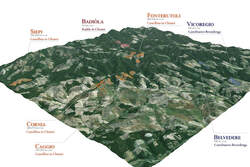 The Mazzei family dates back to the 11th century. They originally came from Florence where they made a living as coopers and artisans. The first documented reference to Chianti as a production region dates back to 1398 between Ser Lapo Mazzei, a notary and connoisseur of wine, and Francesco Datini, a merchant from Prato. In this document, authored by Ser Lapo Mazzei, he paid for six barrels of wine from Chianti. In 1435, Ser Lapo Mazzei’s granddaughter, Madonna Smeralda Mazzei, married Piero di Agnolo da Fonterutoli, and Castello di Fonterutoli became part of the Mazzei family’s estate. For the past 24 generations, the Mazzei family has been producing wines at Castello di Fonterutoli. The Sangiovese grape is the most planted grape variety in Italy, and Tuscany’s largest and best-known Sangiovese-dominant wine region is Chianti. Depending on where the grapes are grown, with climate and soil being a factor, Sangiovese can deliver a wine that is fruit-forward with bright acidity and high tannins or lean towards earthy with herbal notes. It runs the gamut of descriptions, but one of Sangiovese’s trademarks is its dark cherry flavor. Last month I attended a virtual tasting with Giovanni Mazzei who represents the 25th generation of this family-owned winery. He is the export director for Mazzei and the eldest son of Fillippo Mazzei who is one of the managing directors of the estate. Beginning with the 2017 harvest, the Mazzei family introduced a different perspective to express the biodiversity of their Sangiovese-based range of wines. Giovanni guided us through a tasting of the estate’s three Chianti Classico Gran Selezione wines from three different terroirs, with each wine exhibiting its own unique character. In addition, Giovanni shared a soon-to-be-released bottle of Siepi Toscana IGT 2018. Giovanni said, “For the last 50 years, we have been dedicated to research to better understand Sangiovese evolution. We have an articulated estate with so many differences from one location to another. The vineyards range from two meters above sea level to almost 600 meters with different terrain and different climates. You can’t have just one solution for everything. It is a massive puzzle! There is beautiful diversity in this region, with each district exhibiting its own characteristics. Our aim is to reflect the viticulture of the region.” As of 2014, Gran Selezione is a new classification above Riserva for Chianti Classico DOCG. A minimum of 80% Sangiovese estate-grown grapes is required. Grapes must be harvested only from the winery’s own vineyards along with upgraded requirements for alcohol, extract, and a minimum aging of 30 months. Giovanni said, “At the end of the day, the rules aren’t really making the wine. It is the winemakers and how they envision the wine and how it is expressed. Gran Selezione is the best of the best. The quality is phenomenal. Only 6% of Chianti Classico DOCG production has qualified so far for the Gran Selezione level. It is a game-changer!” All vineyard cultivation is entirely manual, including the grape harvest. Badiòla Chianti Classico Gran Selezione DOCG 2017 100% Sangiovese grapes were harvested from the estate’s highest altitude vineyards of 570 meters in the Chianti municipality of Radda. Soil is mainly a mix of Galestro (local lime marl) and sandstone. The average vine age is 16 years. The vines benefit from ventilating winds with lower temperatures than any other estate vineyard. The wine goes through natural fermentation, with no yeast added. It is aged for 24 months in French oak barrels from Burgundy (30% new) and then ages further in the bottle. This is a fresh and elegant wine with lovely aromas of fresh berries, cherry, and spice. The palate offers red fruit, cherry, plum, spice, chalk, and silky tannins. The wine is well integrated with a long finish of sour cherry, spice, and a hint of cocoa. Giovanni said, “I’m a big fan of this wine. It has complexity with austere character, typical from Radda.” Alcohol: 13.5% SRP: $99 Castello Fonterutoli Chianti Classico Gran Selezione DOCG 2017 This is the estate’s flagship wine made from a selection of 11 of the best vineyard plots surrounding the Fonterutoli hamlet in the Chianti municipality of Castellina. The age of vines is between 25 to 30 years. The altitude is 470 meters above sea level with rocky limestone, chalk, and rich skeleton texture. The wine was first produced in 1995 and is a forerunner for Gran Selezione. The 2017 vintage is the first vintage to use 100% Sangiovese. Each plot is individually vinified, and the wine is then aged in Burgundy and Bordeaux barrels for 25 months and then six months in concrete tanks before bottling. This is a wine with structure and elegance. Delicious aromas of wild berries, violet, lavender, cherry, and earth lead the way for an explosion of flavors on the palate. Cherry, dark fruit, vanilla, licorice, spice, and minerality blend with silky tannins. This wine is rich and crisp. Giovanni says, “It is an energetic wine. The juice gives a sense of purity. It is a pure Sangiovese”. Alcohol: 13.5% SRP: $74 Vicoregio 36 Chianti Classico Gran Selezione DOCG 2017 This wine is a blend of 36 different Sangiovese biotypes derived from fifty years of research. The biotypes are planted in a single vineyard at 350 meters above sea level on a sunny plateau of Castelnuovo Berardenga. Soil is clay-rich limestone and fossil matter. Thirty-six individual vinifications take place in French oak barrels, and then the wine is aged for 18 months in French oak barrels (50% new). This is followed by several months in concrete tanks. Seductive aromas of cherries, spice, and floral envelops the nose. The palate is layered with rich and expressive flavors of dark cherry, dark fruit, lavender, spice, herbs, pepper, and earth. Chewy tannins, with lingering spice and dark cherry, add to a long and delicious finish. This is a vibrant and complex wine. Giovanni says, “This wine is the heart beating from Vicoregio.” Alcohol: 13.5% SRP: $99 Siepi Toscana IGT 2018 There is an interesting story attached to this wine. The first vintage was in 1992. It is a 50/50 blend of Sangiovese and Merlot. According to Giovanni, the family fought over how to produce this wine. The older generation wanted it made with mostly Sangiovese, and the younger generation wanted it made with 100% Merlot. A compromise was made, and a 50/50 blend was produced. The grapes are sourced from 10 to 35- year-old vines in the Siepi vineyard that has belonged to the Mazzei family since 1435. The Mazzei family was one of the first producers to plant Merlot in Chianti Classico. Each variety goes through a gentle vinification. 70% of the wines are aged in new French barriques (Merlot: 18 months, Sangiovese: 16 months), and then they are blended and aged an additional four months in steel tanks. The wine is bottle-aged for four months before release. This wine opens with aromas of dark fruit, cherries, berries ,and subtle notes of spice, cocoa, and herbs. The palate is an infusion of delightful layers of dark cherry, dark berries, spice, hints of plum, vanilla, and toast. Silky tannins add to this rich and complex wine. Giovanni says, “This wine is very approachable and has great drinkability.” Alcohol: 14.5% SRP: $130 Although I was thousands of miles away from Tuscany, it was exciting to take a virtual trip through all of the vineyards with Giovanni. The character and uniqueness of each municipality were beautifully captured in each bottle of wine. For a brief moment in time, my palate enjoyed “traversing through the terroirs of Castello di Fonterutoli”. Until next time…
Cheers! Penina To leave a comment or if you have an inquiry, please contact me at [email protected] The holidays are almost upon us, and many will be celebrating either alone or with immediate family. But that’s no reason to curb the festivities. In fact, this year, more than ever, it is important to embrace our traditions and be thankful for family and friends that are still with us. In addition to sparkling wines, which I will be talking about in the next week or so, here are a few light still wine suggestions for your holiday table. These versatile and food-friendly wines will pair nicely with poultry, fish, vegetarian cuisine and latkes! Cavit Pinot Noir IGT 2018 The grapes for this 100% Pinot Noir come from the vineyards of Provincia di Pavia in the Lombardy region of Italy. After fermentation, the wine rests on its lees in large oak barrels until release. Aromas of floral, cherry and cranberry segue onto the palate with dark cherry notes, red berries and a hint of spice. This is a well-structured wine with silky tannins and a long finish. Serve as an aperitif or with your favorite meal! Alcohol: 12% SRP: $9.99 Nik Weis St. Urbans-Hof Wiltinger Kabinett Riesling 2018 Wiltinger is a village located in the Saar valley of Germany. The vineyard is on a site called Schlangengraben. It is noted for its reddish slate soil, a color that is derived from the iron content that adds minerality and spice to the wines. The vineyard was planted in 1905 and is one of the oldest in the entire Mosel region. These old vines have deep roots and produce small berries that create intense, lively, aromatic and complex wines. This wine has a VDP Ortswein classification, meaning that it comes from a village’s best vineyards. Intoxicating aromas of floral, stone fruit, spice and a touch of smokiness set the stage for this succulent wine. The palate offers peach, apricot, pear, spice and slate minerality blended with crisp acidity. It has depth and structure with a restrained residual sweetness. Serve as an aperitif or with fish, Asian cuisine and white meat. Alcohol: 9% SRP: $19.99 Mandrarossa Costadune Frappato Terre Siciliane IGT 2017 According to Wines of Sicily, “Frappato is believed to have its origins in the Ragusa province of Sicily around 300 years ago. It is characterized as a light and refreshing wine. Nose: full bouquet, cherry Palate: mild tannins violet, strawberries.” Grapes for this 100% Frappato wine were sourced from vineyards at 820 ft. above sea level in Menfi, southwest Sicily. The wine matures for eight months in steel vats. Lush red fruit aromas, floral and spice set the stage for this light-bodied wine. The palate offers a juicy array of cherries, strawberry, a hint of red plum, sweet spice and a touch of sour cherry that lingers on the finish. It is beautifully balanced between sweet and savory and ideal for a variety of food pairings. Try serving it slightly chilled. Alcohol: 13% SRP: $17.99 Pfaffl Grüner Veltliner Weinviertel DAC Zeisen, 2018 Austria’s most significant and indigenous white grape variety is Grüner Veltliner. This dry wine is known for its vibrant acidity and flavors of pepper and citrus. The grapes for this 100% Grüner Veltliner are harvested from 43-year-old vines located in the Weinviertel appellation of Austria. The wines are bottled after spending four months in stainless steel tanks. As per Austrian Wine, ““DAC” stands for “Districtus Austriae Controllatus” and is the legal abbreviation for special region-typical quality wines. Thus, if a label states the winegrowing region followed by the letter combination DAC, we are talking about a region-typical quality wine.” Citrus, herbs, spice and pepper delight the nose. This is a very crisp and juicy wine with flavors of key lime, pepper, spice, herbs, a touch of minerality and a zingy and peppery finish. It is a refreshing wine and will leave your palate craving for another sip. Serve as an aperitif or pair with poultry, smoked salmon and oysters. Alcohol: 13% SRP: $18.99 Saget La Perrière “La Perrière” Sancerre 2019 Sancerre is a small wine appellation in the Loire Valley wine region of France. It is famous for its production of white wines made from Sauvignon Blanc. As cited by Loire Valley Wines, “Centre-Loire region is at the center of France. It is the original home of Sauvignon Blanc and of Sancerre, the world’s most prestigious Sauvignon Blanc wine that sets international standards for the grape.” This 100% Sauvignon Blanc is sourced from vineyards in the Centre-Loire region. The wine is aged on fine lees for three to four months, then bottled and aged for at least five months in the cellar. Lovely aromas of white stone fruit and floral mingle with citrus and a touch of minerality. The palate is lush, rich and creamy with added notes of melon, lemon, pink grapefruit, pear, a hint of herbs and a flinty finish. It is a beautiful marriage of flavors and vibrant acidity. Drink as an aperitif or pair with fish, poultry, seafood and appetizers.
Alcohol: 13.5% SRP: $39.99 The above wines are meant to be enjoyed all year round. Indulge your palate and have fun mixing and matching with your favorite food pairings. Until next time… Cheers! Penina To leave a comment or if you have an inquiry, please contact me at [email protected] It was June of 2016 while attending the Descorchados NY South American wine event that I first met Felipe Ortiz. Felipe is Chief Winemaker for Casa Donoso located in the Maule Valley of Chile. I remember being caught up in his enthusiasm and passion as he introduced me to his very intriguing wines. Felipe said that the Maule Valley had a “multiplicity of characters” and then gave a general description of the wines. “White wines are very fresh with mineral traces, in particular our Sauvignon Blanc. Red wines with short maturity cycles show a very good balance between alcohol and acidity, like Merlot and Cabernet Sauvignon. And above all, a nice and silky Carménère is a tricky and demanding variety which is hard to mature properly in other valleys”. One year later we met again at the same event. And once again, my palate was treated to Felipe’s expressive wines. We have stayed in touch throughout the last few years with the hope that I might visit Casa Donoso one day. I have not had the opportunity to travel to Chile yet, and now with travel on hold for most of us, it is unlikely that I will visit there any time soon. So, Felipe sent Casa Donoso to me with a bountiful shipment of wines and a candid long-distance conversation. Chile is a long and narrow country bordering the Pacific Ocean to the west, and to the east lie the Andes Mountains, which is among the world’s highest mountain range in the Western Hemisphere. Chile spans 2700 miles running from north to south and is only 100 miles wide. Its numerous wine regions are then divided into sub-regions. Due to the expansive range of terroirs, the style of wines made here has an equally wide range, with most of the climatic variations in the wine-growing regions running from east to west due to the influence of the ocean and mountains. Casa Donoso is located in the sub-region of Talca, which is in the heart of the Maule Valley and is part of the DO Central Valley region. Maule Valley is the largest wine-producing region and also the oldest wine-growing region in Chile. Some of the countries’ oldest vines that were planted over 100 years ago still exist here. It is also one of the southernmost wine-growing areas of Chile. The soils throughout Maule Valley are of sedimentary origin, such as sandy and deep clay loam and the climate is Mediterranean. The main grapes grown here are Cabernet Sauvignon, Carménère, Merlot, Carigñan, Sauvignon Blanc, and Chardonnay. Casa Donoso was created 30 years ago by a group of French investors who saw the potential of this unique terroir. They made it their mission to focus on the production of premium wines from the onset. They were among the first foreign investors to introduce modern technology to the winemaking industry in Chile. In 2014 the Selume family, a national group, took over. Felipe said, “They continue to follow the line of quality in the wines. We have a French heritage from the beginning as well as a new world winemaking vision, which allows us to generate high-level wines. Casa Donoso is a classic and elegant concept in the Maule Valley.” Felipe Ortiz joined Casa Donoso in 2008. I asked Felipe how he became interested in winemaking and where he received his training. Felipe: “I think my first approach to the wine world was thanks to my father. He always showed me varieties of wine pairings with food when I was young. Then at the university, I studied Agronomy Engineering in Chile. To be a winemaker here, you must first study agronomy. During the last years of my studies, I leaned towards viticulture and enology, a branch of agronomy. In Chile, before I finished the university, I started working during the vintage season at Los Vascos for a total of four vintage seasons. Then I also worked at Viña San Pedro during another harvest season.” Felipe graduated with a degree in Agronomy Engineering and Enology. From 2006 to 2008 he went on to develop his career working with wineries in California, Provence and Barossa Valley in Australia. It was the middle of 2008 when he joined Viña Casa Donoso where he is now the chief winemaker. Felipe is a member of the Chilean Association of Engineering Agronomists Enologists. (ANIAE) Casa Donoso has 400 hectares of vineyards located throughout Maule Valley from central Maule to the coastal and pre-mountain zones. The altitude on average is 100 meters (328 ft) above sea level. One of their vineyards, La Oriental Estate, is in central Maule and one of the oldest estates in Talca with 123 hectares and vines that are more than 60 years of age. The Donoso portfolio of wines is diverse and has several different brands representing a range of traditional and atypical red blends. When I met Felipe in 2016, the very first wine he poured for me was Sucesor Romano Limited Release 2015. Sucesor is considered “the avant-garde line of the Donoso group.” It is also a project that has inspired Felipe and allowed his creativity to shine through with these daring blends. Felipe, tell me about Sucesor and its inception. Felipe: “Successor was created with the need to seek oenological innovation. In 2013 we started working with Carigñan with a more friendly and assembled concept called Successor BLUE. Then in 2014, we developed Sucesor Romano, a challenging project made with the César noir grape that was almost extinct in the world. Jean-Michel Boursiquot is a renowned ampelographer, who rediscovered what is now Chile’s flagship grape variety, Carménère. He also discovered the César noir grape (Romano, colloquial name) in our fields in the ‘90's. He later helped us with the information process to register the grape in Chile. We have just 0.5 hectares of this variety in our vineyard and we are the first winery in Chile to commercialize this grape. We continued our project with Sucesor RED, which is Carménère assembled with Malbec, also an unusual mix in Chile and the world. And, starting in the year 2019, we began developing a new project with Sucesor, using the grape, Portuagais Bleu. We hope to release this project in the coming year.” What is the most challenging grape for you to work with? Felipe: “I think with relevance to the Sucesor project, it is César noir. It is a very delicate grape, which we have to cut at the right time without losing freshness. Then in the winemaking process we try not to over-extract it too much. Finally, the wine rests for short storage in Spanish amphoras and another part in used barrels (not new), which increases its potential. César noir originates from Burgundy, strongly planted in the Irancy area, where history tells that it is mixed with fine Pinot noir to improve its concentration. In Chile, it is estimated that it arrived during the year 1945. But there is information that it may have even arrived earlier.” Has climate change affected your approach to winemaking? Felipe: “Undoubtedly! Ten years ago, the Maule Valley (160 miles from Santiago in southern Chile) was much colder and we had to wait longer than normal for grapes to mature. For example, Carménère harvesting took place at the end of May. Today climate change has affected an increase in temperatures where the same Carménère is harvested 30 to 45 days earlier. Unfortunately, together with climate change, we have had to adapt to drought and low rainfall over time. So we have to generate new ways to advance in winemaking. Each year is different; there are no recipes to produce good wine.” The Wines D Icon Limited Edition 2015 This is an unfiltered, Bordeaux-style wine blended with 40% Cabernet Sauvignon, 30% Carménère, 20% Malbec and 10% Cabernet Franc. Grapes are harvested from 70-year-old vines. Wine is aged for 24 months in French oak barrels, of which 25% is new oak. Aromas of dark berries, spice and a touch of floral lead to a luscious palate of plum, blackberry, spice and vanilla. It is beautifully blended with silky tannins and a long finish. A trace of herbs and vanilla linger. Felipe: “It is a very elegant and aromatic wine, not very concentrated, Bordeaux style, but with a lot of character of our terroir. For me, it shows a very elegant and classic concept of Maule valley!” Alcohol: 14% SRP: $55-$65 1810 Super Premium Cabernet Sauvignon- Carménère 2017 The blend for this wine is 50/50. Grapes are harvested from 40-year-old vines and the wine is aged for 18 months in French oak barrels, of which 15% is new oak. The name for this wine honors an important part of Chilean history. Talca was the site where the Chilean Act of Independence was signed in 1810. Dark berries, plum and spice aromas segue onto the palate with notes of fig, toast and vanilla. This is a subtle and smooth wine with firm tannins and a lengthy finish. It is very elegant. Felipe: “It shows what is done with these two varietals in Chile, a lot of country image in this wine and another of our classic wines. It is of the classic line, but with a very marked concentration and intensity.” Alcohol: 13.5% SRP: $30-$35 Bicentenario Gran Reserva Carmenere 2018 This wine is 100% Carménère. Grapes are sourced from 30-year-old vines. 70% of the wine is aged for 12 months in French and American oak barrels and the remaining 30% is kept in stainless steel tanks. The name and label are a tribute to 200 years of independence for Chile. Subtle floral aromas mix with fresh red fruit that gently spills onto the palate with notes of raspberry, dark berries, spice and soft tannins. It finishes nicely with a hint of toasted oak. Felipe: “This Carménère follows a line that is NOT overripe or high alcohol but is a very fresh Carménère. Red fruit, mild spices, and an elegant mouth. One of the characteristics of the Maule Valley is the freshness of the wines (different to other valleys in Chile)” Alcohol: 13.5% SRP: $16-$20 I love what the back label for the Sucesor wines says. “Sucesor is the disordered line of Casa Donoso Winery where our winemaker proposes daring and innovative blends that step out of the classic style of the winery. These wines have been created for all wine lovers who are each day bolder.” Sucesor Blue Limited Release 2015 This is a blend of 60% Carigñan, 25% Cabernet Sauvignon and 15% Cabernet Franc. Grapes are harvested from 80-year-old vines in the coastal vineyards of Loncomilla. 30% of the wine is aged in Spanish amphoras for 18 months and 70% in French oak barrels for 15-18 months. Lush dark and red berry aromas leap out of the glass with a touch of floral and dark cherry added. This wine is smooth and delicious with berries, plum and mocha dancing on the palate. Subtle notes of minerality blend well with this refreshing red. Felipe: “This shows the Carigñan in another face from the normal. it is a fruity, fresh wine style, assembled with Cabernet and Cab Franc. It also does not pursue a lot of alcoholic degrees and is a very friendly concept of Carigñan. Part of its aging is using Spanish amphoras, which reflects a very powerful fruit.” Alcohol: 13.5% SRP: $35-$45 Sucesor Red Limited Release 2016 This is a blend of 80% Carménère and 20% Malbec. Grapes are harvested from 40-year-old vines. 30% of the wine is aged in Spanish amphoras for 18 months and 70% in French oak barrels for 15-18 months. Heady aromas of floral mingled with red fruit and spice spill onto the palate to reveal notes of strawberry and cherry that blend nicely with spice and a trace of red plums. Silky tannins and a long finish with vanilla and spice lingering will make any palate sing. Felipe: “This wine shows a very different face of Carménère mixed with a Malbec. It has floral notes and generates a very interesting nose. In the mouth, there is a bit more concentration and intensity but without losing the elegance of the Carménère (soft tannins). Sucesor plays with amphoras in the aging, which is characteristic of the line.” Alcohol: 13.5% SRP: $35-$45 Sucesor Romano Limited Release 2018 This is the first time I have tasted a wine made with César noir. It is a blend of 90% César noir and 10% Carménère. Grapes are harvested from 70-year-old vines. 50% of the wine is aged in Spanish amphoras and 50% in French oak barrels for a period of eight to ten months. Seductive floral aromas with notes of red fruit, raspberry and spice set the stage for this delicious wine. Floral notes continue onto the palate with layers of rich berries, spice and plum. Minerality, hints of herbal and nice acidity add depth to this juicy wine. The finish is long with violet, vanilla and mocha lingering on the palate. Felipe: “Cesar noir has been a rediscovery of this variety in Chile, which we found in our fields. It is a project that started in 2013 and the first vintage was 2015 and introduced around the world (USA, EU, ASIA, Brazil). We were the first winery in Chile to show this wine. It is a very fresh wine, red fruit, medium body and characteristic juiciness of this Maule Valley. It is a very different proposal and an invitation to the innovation of all this Sucesor line.” Alcohol: 13.5% SRP: $35-$45 After tasting through these wonderful wines, I’m eager to know what the Donoso Group has in the pipeline for the future. What goals in winemaking are you still looking to achieve? Felipe: “I think to continue doing work with grapes that are little worked on or lost in the world such as Cesar noir and Portugais Bleu. The innovation side I think is very challenging as a winemaker. Also, Donoso Group supports these developments and I feel very pleased about it. My pursuit is to make wines that fully reflect the terroir that they come from, always generate a unique character independent of the variety and finally make wines that the consumer remembers and enjoys always.” Of course, I can’t end this conversation without asking what your personal favorite wine is to drink? Felipe: “I think my favorite wine depends on the moment. For example, for a barbecue I look for wines with a higher concentration such as Cabernets or mixtures based on cabernet, it can also be a Carigñan. If we talk about seafood, what better wine than a rich Sauvignon blanc from the Maule foothills. For milder or spicy foods there are many alternatives such as Carménère, Romano, Malbec, among others.” Felipe has definitely captured the essence of the terroir in these wines and sipping them has brought me a tad closer to Chile. However, I can’t wait until the doors open once again for traveling. I’m looking forward to a 360-degree tour of Casa Donoso and another wine tasting with Felipe! Until next time…
Cheers! Penina To leave a comment or if you have an inquiry, please contact me at [email protected] Over the last few years I have had the pleasure of meeting many dynamic women in the wine industry from around the world. These women hold positions that range from winemakers and winery owners to operations management, business development, marketing and financial planning. They are a rarity in an industry that has been notoriously dominated by men. Happily, the landscape is changing and more women globally are rising to the occasion and making their presence known in the wine world. I was recently invited by Bethany Burke of Taub Family Selections to join a panel discussion and virtual tasting on Zoom, focusing on “The Next Generation of Women In Wine”. Dr. Laura Catena of Bodegas Catena Zapata & Bodegas CARO in Mendoza, Argentina moderated this lively discussion. She was joined by panelists Anne Trimbach, of Trimbach in Alsace, France, Laure Colombo, of Vins Jean-Luc Colombo in Cornas, Rhone Valley, France and Alessia Collauto Travaglini of Travaglini in Gattinara, Piemonte, Italy. These accomplished and talented women were all born into multi-generation family-owned wineries, but their backgrounds and the paths they took before joining the family business are diverse. However, they all share the experience “as women” of assuming an important position and role in their family wineries. Here is an introduction to these amazing women. Also, each panelist selected a wine representative of her family’s estate for us to taste. Dr. Laura Catena Proprietor, Bodegas CARO Mendoza, Argentina Laura is a fourth-generation Argentine vintner, born in Mendoza, Argentina. Her great-grandfather founded the Catena Winery in 1902 after emigrating from Italy. In addition to being the proprietor of Bodegas CARO, Laura is currently managing director of Bodega Catena Zapata. Her path to becoming a vintner in her family’s winery was quite circuitous. Laura graduated magna cum laude from Harvard in 1988 and then earned a medical degree from Stanford University. It wasn’t until 1995 that she joined her father, Nicolas Catena Zapata, in the winery as a winemaker. In addition to authoring two books, Laura splits her time between Mendoza and San Francisco where she practices Emergency Medicine. One of Laura’s many passions is to learn more about high altitude viticulture, the vineyard soil microbiome and wine ageability. In the struggle for female equality in the wine business, Laura said, “There is no male equality either.” As she has witnessed in her winery, “If a man says he needs to go home because his child is ill or he has to make dinner, the boss will respond with ‘Where’s your wife?’ If a woman asks the same thing, it is accepted. There is such a long road still ahead for both women and men. But we are coming from a place of progress and I’m very excited about the future.” Bodegas CARO, CARO 2017 To learn about the collaboration between the Catena family and Domaines Barons de Rothschild that birthed CARO, please read my previous story. Two Cultures + Two Estates = Elegant Wines http://thewineknitter.com/1/post/2020/01/two-cultures-two-estates-elegant-wines.html This wine is a blend of 74% Malbec and 26% Cabernet Sauvignon. The Malbec softens the Cabernet Sauvignon, which is a little bitter. Grapes are selected and hand-harvested from the best blocks of the high altitude vineyards of Mendoza. The wine is aged for 18 months in French oak barrels from Lafite’s cooperage. Aromas of rich red fruit, berries, baking spice and violet segue onto the palate with dark cherry, black raspberry and a hint of dark chocolate on a long finish. Smooth tannins and refreshing acidity are beautifully balanced. Alcohol: 14% SRP: $70.99 Anne Trimbach, Export Manager for Trimbach Alsace, France Anne is the 13th generation and the first woman to “be on the scene” in her family’s winery situated in Alsace, France. Anne grew up in the winery and knew from an early age that she would work there. Her great uncle expressed doubts about her getting into the business. He said, “Oh really, you want to work with us? But you are a woman and how will you manage this? One day you’ll want to have babies.” Anne expressed in relating this story, “I had to prove I was able to.” Her journey involved studying economics in Strasbourg, then spending three years in Dijon. She completed her master’s degree in Burgundy and then interned with a beverage distributor. Anne moved back to Alsace in 2008 and began to formally work as a export manager and Trimbach ambassador. Anne also introduced and developed a presence on social media for the winery. She said, “ The world of wine is about sharing and catching the eye of people. We share our passion for wine and people through videos.” Trimbach “Réserve” Riesling 2017 This is 100% Riesling. Grapes for the Réserve are sourced from old vineyards in Ribeauvillé and surrounding villages with vines 45 to 50 years old. Due to the complexity of the terroir here, some of the finest wines are produced. Anne noted that because of climate change “we are seeing early harvests due to temperatures rising.” Beautiful aromas of floral, peach, grapefruit and a hint of diesel set the stage for this classic. dry Riesling. The palate offers nectarine, green apple, lemon and minerality. This is a vibrant and fresh wine with good aging potential. Alcohol: 13% SRP: 34.99 Laure Colombo, Winemaker at Jean-Luc Colombo Rhône Valley, France Laure is second-generation and grew up in the small village of Cornas where the vineyards were her playground. Laure said, “I escaped the village and didn’t plan to work in wine, I just wanted to live in big cities. I was anxious to leave and travel.” And so she did. After studying commerce at the University of Lille, she traveled to Florida and worked at Disney World Epcot Food & Wine Festival. Laure also worked as a sommeliers assistant at Alain Ducasse’s restaurant in NYC and traveled to New Delhi, India to work with the Grover vineyard. And the list goes on! When she returned to France, Laure interned at Château Haut-Brion while studying for a bachelor’s degree in Viticulture and Oenology in Bordeaux. She then went on to receive her master’s degree in Oenology from the University of Montpellier. Laure said, “By traveling around the world, I learned my roots and I wanted to come back. I finally joined my family in 2010 and little by little I learned to work with the family.” She has been working alongside her parents ever since. For a glimpse and background of Laure’s parents and where she grew up, please click on the link below to read my story. A Hidden Treasure - The WineKnitter http://thewineknitter.com/1/post/2019/03/day-713-a-hidden-treasure.html Jean-Luc Colombo Saint-Peray AOC “La BelleDe Mai” 2018 This wine is a blend of 60% Roussanne and 40% Marsanne. Grapes are hand-harvested from a single vineyard of the oldest part of this small 10-hectare appellation. Laure said, “The grapes are co-planted, harvested and vinified together. The ratio changes from year to year, but normally one half to two-thirds of the Roussane is used in the blend.” Grapes are fermented in oak barrels and the wine is aged on the lees for six months. This is a rich and complex wine with enticing aromas of floral, pear and grapefruit. The palate offers honeysuckle, apricot, peach, a hint of vanilla and citrus zest on the finish. Creamy texture and fresh acidity sate the palate. Alcohol: 14.5% SRP: $29.99 Alessia Collauto, Travaglini Gattinara, Italy Alessia is the fifth-generation of the Travaglini wine family. “Fourth-generation, Cinzia Travaglini, now runs the estate, along with her husband Massimo Collauto, chief winemaker. Their efforts, like the generations before them, have made Travaglini one of Italy’s most recognizable wines and the #1 selling Gattinara in the world. Their children, Alessia and Carolina, are currently involved in the winery, and will be the next generation to run the estate.” Alessia has a degree in Economics and Business Management. She also received her Certificate of Sommelier in 2017. She spends time tending the vines at Travaglini, working in the cellar with her family and also participates in the administration, marketing, sales and promotion of their wines. Alessia stated, “My parents introduced me to the secrets of the vines and situations of everyday business and little by little transferred to my sister and me the passion for wine.” Alessia said that the experience of being a sommelier made her curious not only to open her mind and try the wines but she also said, “Most importantly it made me curious about the vinification of the wine and the stories behind the wine.” Travaglini Gattinara DOCG 2016 This wine is 100% Nebbiolo and is Travaglini’s flagship wine. The small appellation of Gattinara DOCG is known for its rare soil that produces grapes with a unique flavor profile, high acidity and tannins. Alessia said, “The complexity of this wine comes basically from the rocks. Although the wine is complex, it tastes very delicate on the palate.” The wine is aged for three years, two of which age in used Slavonian oak casks. The wine rests for three months in bottle Lovely aromas of rose petals, berries, fennel, baking spice and pepper prep the palate for a rich and inviting wine. Notes of rose, cherries, raspberry, cinnamon, earth and minerality tease the palate. I love the complexity of this wine in addition to its freshness and tannins that talk.
Alcohol: 13.5% SRP: $33.99 It was a pleasure and honor to be a part of this discussion and tasting. I loved their stories, anecdotes and, above all, the inspiration and path that they are creating for more women to enter the wine industry! Until next time… Cheers! Penina To leave a comment or if you have an inquiry, please contact me at [email protected] Despite the restrictions on travel during this pandemic, I have been virtually touring the world with a glass of wine in hand. Of late, I’ve been yearning to visit and experience the beautiful island of Sicily again. Fortunately, I have a few bottles of Sicilian wine that will happily transport me back to the island. Accompanying me on this trip are two very special bottles of Donnafugata wine. Please click on “Donnafugata” from the menu on the right to learn about this winery, their vineyards throughout Sicily and numerous wine reviews. Sherazade Sicilia DOC 2018 Nero d’Avola is an indigenous grape that is considered Sicily’s most important red wine grape. Sherazade is 100% Nero d’Avola and the grapes are sourced from Donnafugata’s Contessa Entellina Estate and nearby vineyards, which are located in the southwestern part of Sicily. The wine is aged for about four months in tanks and then a minimum of three months in the bottle. Delectable aromas of violets, red fruit and spice open to a lovely palate of cherry, plum, berries and spice. Well-balanced tannins and acid add to the character of this fresh and lively wine along with a touch of pepper and tartness on a long finish. Serve with mature cheese, pasta and red sauce, seared tuna and calamari. Alcohol: 13% SRP: $25 Donnafugata suggests the following recipe to pair with Sherazade. Pasta With Tuna and Caper Leaves Time 1 hour 40 minutes Difficulty Low Ingredients
Cut a thick slice of fresh tuna in small cubes. Brown the cubes in a pan with the olive oil, garlic, mint and caper leaves. As soon as they have browned, remove the ingredients from the pan and put them in a smaller pan. Brown half an onion, finely chopped, in the oil in which the tuna was fried. Add the tomato pulp, the browned tuna, 1 cup white wine and 3 cups water. Flavor with 4 more caper leaves, a pinch of cinnamon and a small pinch of pepper. Cook for about 45 minutes. Do not let all the liquid cook off. Cook the busiati (pasta) and pour it into the pan with the tuna and flavorings. Cook over high heat for a few seconds while stirring the pasta energetically. Decorate with toasted slices of bread and caper leaves. Recipe from Chef Peppe Giuffrè – Giardino Eden – Trapani Floramundi Cerasuolo di Vittoria DOCG 2017 This wine is a blend of Nero d’Avola and Frappato. Grapes are sourced from vineyards in the Vittoria area, located in southern Sicily. Donnafugata has 18 hectares of vineyards in production here consisting of 11 hectares of Nero d’Avola and 7 hectares of Frappato. Cerasuolo di Vittoria DOCG is considered one of the most noteworthy wines produced in Sicily and it is the only wine in Sicily with a DOCG status! Only Nero d’Avola and Frappato are allowed in the blend. Cerasuolo means ‘cherry-colored’ in Italian. Frappato is light-bodied with low tannins and flavors of cherries and strawberries. Nero d’Avola has weight and is full-bodied with a rich texture and dark red fruit flavors. Together, they complement and bring out the best in each other. The wine is aged in tanks for eight months and then a minimum of seven months in the bottle. Intense floral aromas envelop the senses with notes of cherry, red berries, plum and spice that segue onto the palate. This is a juicy wine that has lots of personality. Hints of rose, strawberry and spice linger on the finish. Soft tannins and a crisp finish add to the entertainment. Serve with pasta, seafood, shellfish, white meat and light appetizers. Alcohol: 13% SRP: $30 Donnafugata suggests this recipe to pair with Floramundi. Swordfish with Citrus Fruit and Pistachios Time
20 minutes Difficulty Intermediate Ingredients
Cover and continue cooking, if necessary adding citrus juice. Serve with the reduced sauce and a handful of pistachios covering the fish, garnishing the platter with two orange slices. Treat your palate to these noteworthy wines and recipes. And enjoy your trip to Sicily! Until next time… Cheers! Penina To leave a comment or if you have an inquiry, please contact me at [email protected] After enduring many sultry days, I enjoyed waking up this morning to 53-degree temperatures and no humidity! And yes, it put me in the mood for red wine, even though I have some lovely white and rosés chilling. I selected Domaine Bila-Haut, which is produced by Michel Chapoutier. Michel is a fourth-generation oenologist and head of Maison M. Chapoutier, founded in 1808. It is located in the Rhône wine region in southeastern France. Michel is one of Rhône’s most famous wine producers and is known worldwide for such wines as Hermitage, Chateauneuf du Pape and Côte Rôtie. In 1999, Michel purchased the 190-acre estate Domaine Bila-Haut located in the region of Côtes de Roussillon, Languedoc in Southwest France. It was a neglected property but showed promise due to the Mediterranean climate and a mix of schist, gneiss and clay soils. With Michel’s knowledge, expertise and passion he turned the land into a perfect growing environment for Syrah, Grenache and Carignan. Sustainable farming and low yields along with Michel’s belief of “emphasis should be on quality, not quantity” have led to producing the highest quality fruit and concentrated flavors in these expressive wines. Les Vignes de Bila-Haut Rouge Côtes Du Roussillon Villages 2017 This Syrah-dominated wine is blended with Grenache and Carignan. Grapes are hand-harvested from plots located on the slopes of the high Agly Valley. Vibrant aromas of plum, dark berries, spice and cocoa set the stage for this succulent wine. Michel Chapoutier adds that it has “the smell of summer rain on stone.” The palate offers layers of plum, dark cherry, spice and pepper that tease and linger on a long finish. This is a beautifully blended and well-balanced wine with silky tannins. Enjoy with grilled fish, meat and dessert! Alcohol: 14% SRP: $15 Domaine de Bila-Haut L’esquerda Côtes Du Roussillon Villages 2017 This is a single vineyard wine made from old vines. Syrah dominates the blend with small amounts of Grenache and Carignan added. The percentages of the blend vary from vintage to vintage. The grapes are hand-harvested from the 67-acre L’esquerda vineyard comprised of 40 to 60-year-old vines that grow in granite and schist soils. Earthy aromas mix with dark fruit, spice, floral notes and mocha. The palate offers juicy notes of black cherry, blackberries, plum, spice and a hint of wet stone. The finish is long with a touch of chocolate and herbs lingering. Delicious! Serve with grilled meat, tuna, poultry and hearty stews.
Alcohol: 14.5% SRP: $28 These Rhône wines are elegant and expressive and Michel Chapoutier never disappoints! Until next time… Cheers! Penina To leave a comment or if you have an inquiry, please contact me at [email protected] Every now and then I like to take inventory of my wine cellar. Many of the wines are what remain from my days with the “Restaurateur”. These special wines quietly wait for me to open them, always tempting me to pour bittersweet memories into my wine glass. So, without much thought and for no particular reason other than curiosity, I chose to open this wine. Château Cap De Faugères is situated in the Côtes de Bordeaux Castillon appellation at the very eastern end of Bordeaux. The estate covers 46 hectares of limestone and clay slopes that border on St. Emilion. Grape varieties grown here are 85% Merlot, 10% Cabernet Franc, and 5% Cabernet Sauvignon with an emphasis on natural sustainable viticultural methods. The vines on average are 30 years old. In 1823 the Esquissaud family took possession of the terroirs of Château Cap De Faugères, Faugères and Péby Faugères. Pierre-Bernard Guisez, a cousin of Philippe Esquissaud, inherited the estates in 1987. He and his wife Corinne Guisez managed the three estates and began promoting vintages of the finest quality. A new fermenting and storage cellar was built in 1992. In 2005, Silvio Denz, a winemaker, bought the estates. And, with the same team in place, they continuously make improvements running the estate with an emphasis on quality. In addition to winemaking, Silvio is a perfume designer and owner of Lalique! Climate plays a key role in the outcome of any vintage. And when the weather is extreme the vines can suffer. The record-breaking heat wave and dry season of 2003 in France had a profound effect on the vineyards of Bordeaux and many of the wines that were produced. Vines were stressed and shut down from lack of water and grapes shriveled on the vines. Much needed rain finally brought some relief to the vineyards around mid-August. It was the earliest harvest on record and although it was too late for many vineyards, others were able to salvage the harvest and produce some memorable wines. Here are the notes from Château Cap De Faugères for the 2003 vintage. “A rare vintage in every sense. The summer brought a heat wave with record sunshine hours and a number of days over 30°C that was well above average. The vintage was marked by quite a cold winter with many days of frost, a mild spring with greater than average differences in temperature and extremely hot summer, particularly June (+5.3°) but above all August (+6°) with record temperatures: 20 days over 30° and several days over 40°C. These weather conditions brought about a drop of 30% in production compared with normal years. Harvesting began 10 days earlier than the previous year, on 12 September. Plot selection was very thorough with the aim of making up perfectly homogenous vats in tannic and organoleptic terms.” My expectations weren’t high concerning how this wine would hold up and taste. So, I decided to pour a glass using my Coravin and save the rest to decant and share with friends another time. I allowed the wine to open and tasted it in 30-minute increments. Château Cap De Faugères 2003 Côtes de Castillon This wine is showing its age and is the color garnet. First aromas and palate impressions are disappointing. Dried fruit and “fortified wine” dominated although there is a hint of dark cherry. 30 minutes Subtle aromas of berries are starting to emerge. The palate exhibits cooked fruit with black cherry on the finish. One Hour There is no marked improvement. So a fellow wine writer suggested I “shake things up a bit” and aggressively dump the wine back and forth from one wine glass to another a few times, aka ‘hyper decanting’. After doing this, I waited a few minutes and then tasted the wine again. It actually worked! There is more pronounced fruit on the nose and most of the cooked fruit has dissipated. The palate offers more subtle notes of berries and a trace of plum and earth. 90 minutes It is taking a long time for this wine to open, but I am enjoying the process. Spice notes are now mingling with the fruit as the wine becomes more expressive. I am looking forward to decanting this wine soon. I have a feeling that there are more hidden treasures in this bottle that need a little coaxing and time to emerge. Many of the wines that I have recently opened from our restaurant days have been spectacular. Some of these wines include a 1969 Petrus, 1961 and 1967 Chateau Haut-Brion, an amazing collection of Far Niente Cabernet Sauvignon vintages dating from 1983-1990 and the list goes on! Check out my stories on the menu at right. As always, thank you to the “Restaurateur” for leaving me with an endless inventory of memories. We miss you. Until next time…
Cheers! Penina To leave a comment or if you have an inquiry, please contact me at [email protected] There is much to be said about the expressive wines of Alentejo. Over the last year or so, I have reviewed many Alentejo wines and written several stories about this diverse wine region. Today, my attention is directed to the Sustainability Program (WASP, Wines of Alentejo Sustainable Program) and five wines from producers who are active members in this program. Alentejo covers one-third of Portugal located in the southern half of the country and enjoys a typically Mediterranean climate with some Atlantic influence. The soil of Alentejo varies throughout its eight sub-regions. In fact, it has the most diverse soil of any region in Portugal. Interspersed amongst the mountains, hills and valleys, one can find soil with clay, limestone, quartz, granite, schist, sandstone and marble. Most of the soils are non-calcareous, meaning they are neutral or more acidic.
Alentejo has 51,000 acres of planted vines that enjoy 3000 hours of sunshine annually. More than 80% of the grapes grown here are red, but whites are gaining momentum, especially Antão Vaz. The wines produced here come in a range of styles, influenced by the diversity of the climate and soil. The Sustainability Program was launched in 2015 by CVRA (Comissão Vitivinicola Regional Alentejana). It’s objective is to reduce costs and increase economic viability through a proactive approach to environmental pressures and social concerns. Some of these initiatives include biodiversity and ecosystems, soil management, renewable energy and water conservation. In just five short years, the WASP program has established Alentejo as one of the world’s most progressive sustainability regions and is being recognized internationally for this award-winning program. WASP began with 96 members in 2015 and has grown to 396 members representing about 45% of Alentejo’s vineyard area. There are currently 1800 grape growers and 260 wineries in Alentejo. According to João Barroso, WASP Director of Sustainability, “Sustainability is the new paradigm of the 21st century. Producers who do not make sustainability a core part of their business model will become progressively outdated, side-lined by consumers and possibly through new intentional policies.” Each wine review ends with a “WASP Highlight”. Casa Relvas Sao Miguel Do Sul Red Blend 2018 A blend of Aragonez, Alicante Bouschet, Trincadeira and Cabernet Sauvignon. Ten percent of the wine is aged in French oak for six months. A bouquet of violet, red and dark fruit lead to a palate of dark berries, cherry and a touch of spice. This is a juicy wine with smooth tannins and fresh acidity. Alcohol: 14% SRP: $12 WASP Highlight: Casa Relvas uses sheep to control weeds during the vegetative rest period of the vineyard, reducing the need for hydrocarbon-dependent herbicides. Esporão Colheita Branco 2018 Harvested from certified organic vineyards, this wine is a blend of Antão Vaz, Viosinho, Alvarinho and a small amount of other grapes. This has refreshing aromas of grapefruit, lemon, and a touch of tropical fruit. A creamy palate (from four months spent on fine lees) blends nicely with tropical fruit flavors, peach and crisp acidity. Alcohol: 14% SRP: $16 WASP Highlight: Herdade do Esporão is one of Portugal’s most progressive wineries. They have led the way with a testing nursery to identify which indigenous grape varieties are best adapted to a changing climate. Herdade Dos Grous Red 2018 This is a nice blend of Aragonez, Alicante Bouschet, Touriga Nacional and Syrah that is aged for nine months in French oak barrels. Delicious aromas of ripe red fruit and spice segue onto the palate with dark cherry, plum and vanilla. Spice and cherry linger on a long finish. Alcohol: 13.5% SRP: $19 WASP Highlight: Herdade Dos Grous has reduced bottle weight across all their wines. Herdade De Coelheiros Coelheiros Red, 2017 This is a 50/50 blend of Aragonez and Alicante Bouschet. It is aged for 12 months in French oak barrels. A nice bouquet of red and black berries, spice and earthy notes envelop the nose. The palate offers blackberry, cherry, spice and pepper with a rich mouthfeel that is balanced with acidity. Alcohol: 14% SRP: $20 WASP Highlight: Herdade De Coelheiros uses bat shelters to encourage bats to make their home here – another natural approach to tackling unwanted insects in the vineyard. Carmim Reguengos Garrafeira Dos Sócios 2014 Alicante Bouschet, Touriga Nacional and Tinta Caiada make up the blend for this robust wine. It is aged for 14 months in French and American oak barrels. Lots of plum, dark fruit and spice greet the nose and segue onto the palate with added notes of blackberry, black cherry, pepper and anise. A perfect balance of acidity and fine tannins add to the lengthy finish. Alcohol: 14.5% SRP: $48 WASP Highlight: Carmim composts all organic waste from the winemaking process (grape pomace and lees) into fertilizer. New additions to the winery include the installation of rooftop solar panels, taking advantage of Alentejo’s abundant solar energy. All of these wines are well priced and very pleasing to the palate. And, for me, it’s a bonus that these producers are making wine with an emphasis on sustainability and moving toward organic farming. Bravo! Until next time... |
Categories
All
|

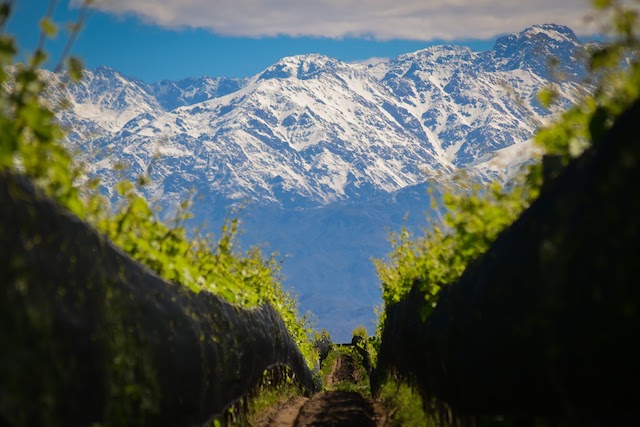
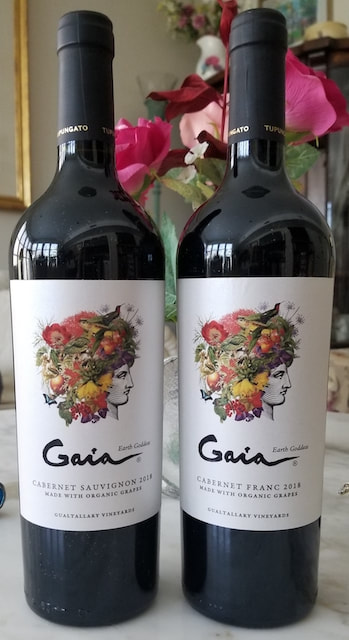
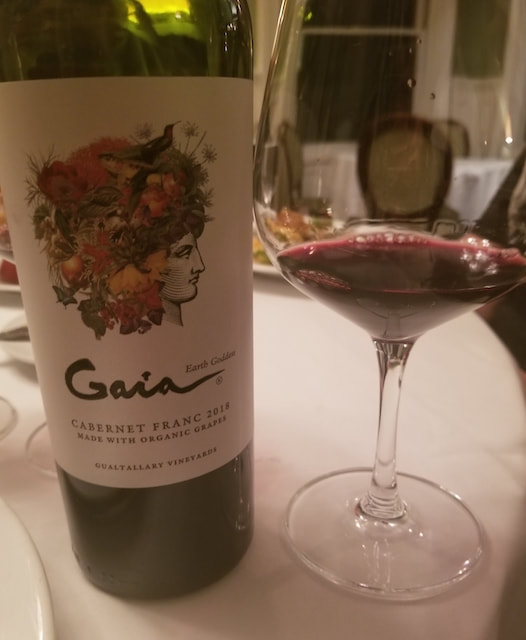
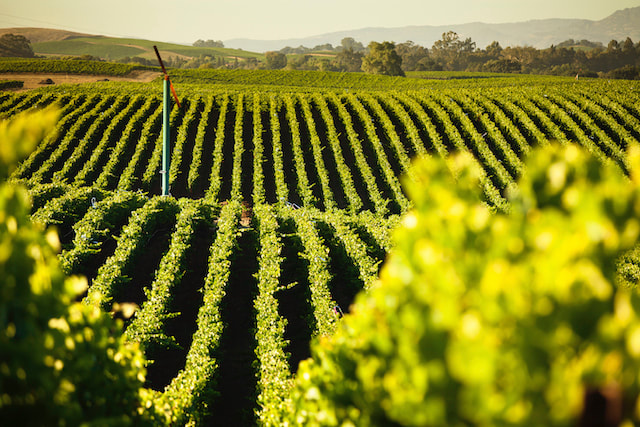

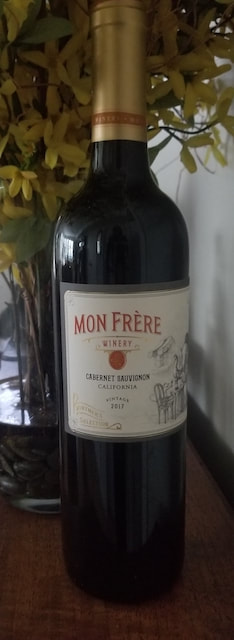
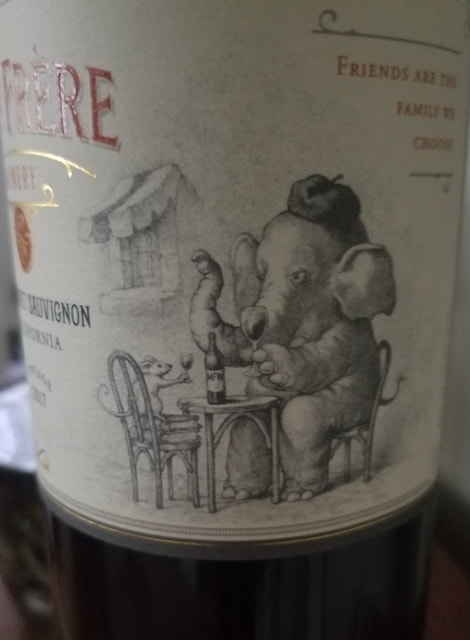
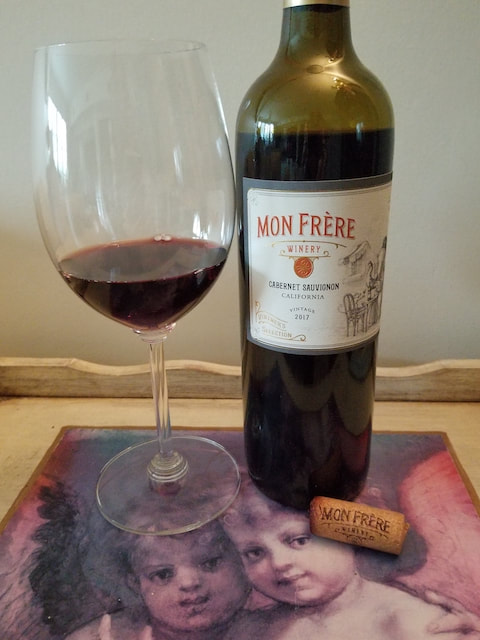
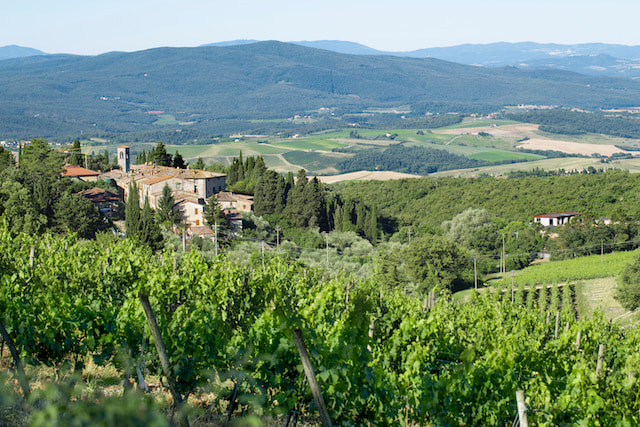
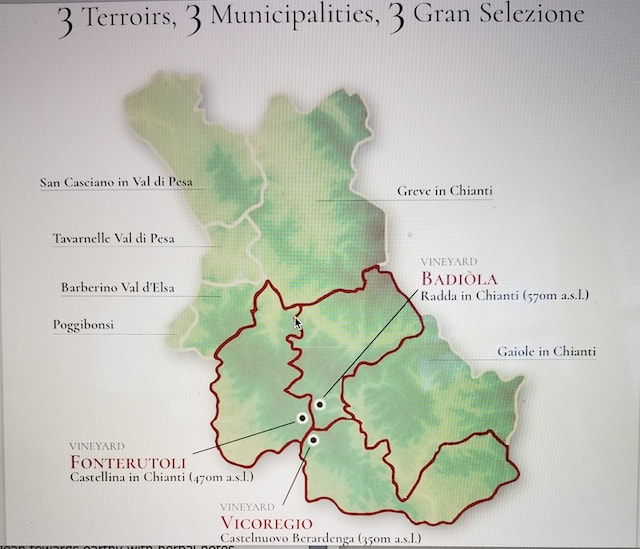
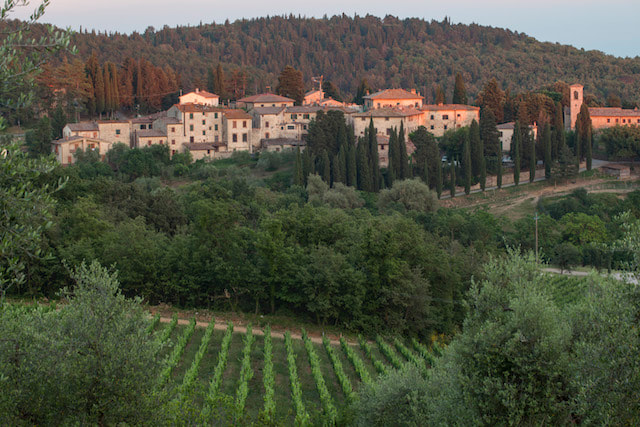
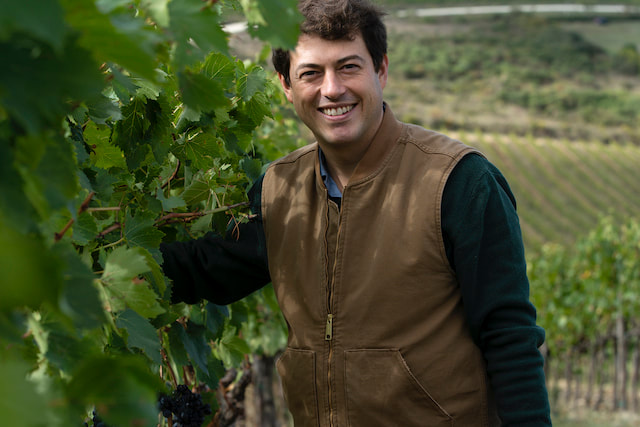
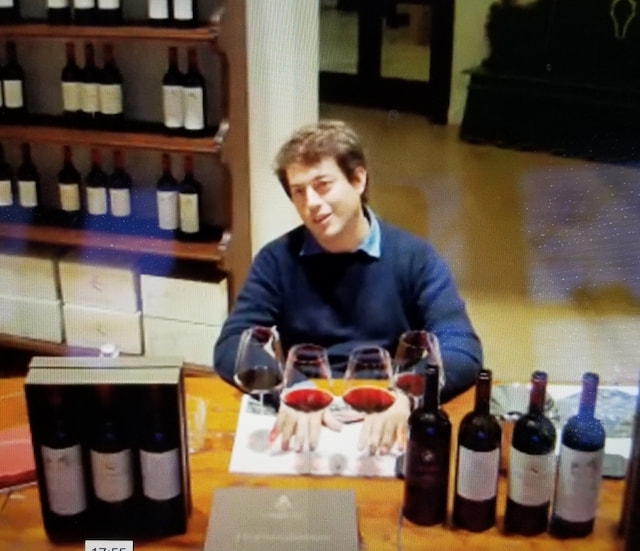
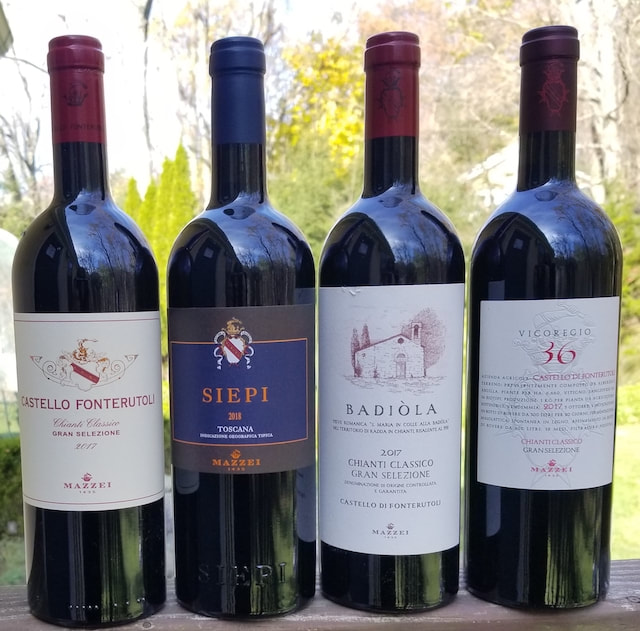
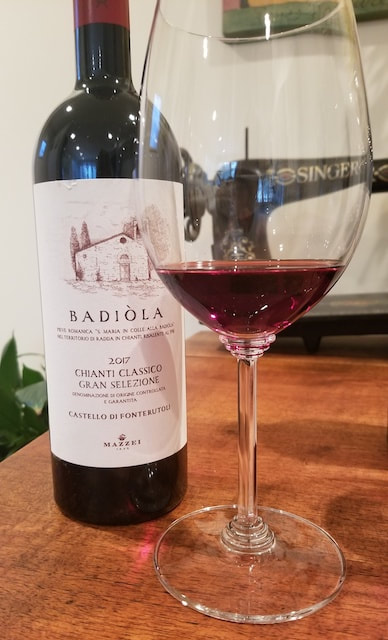
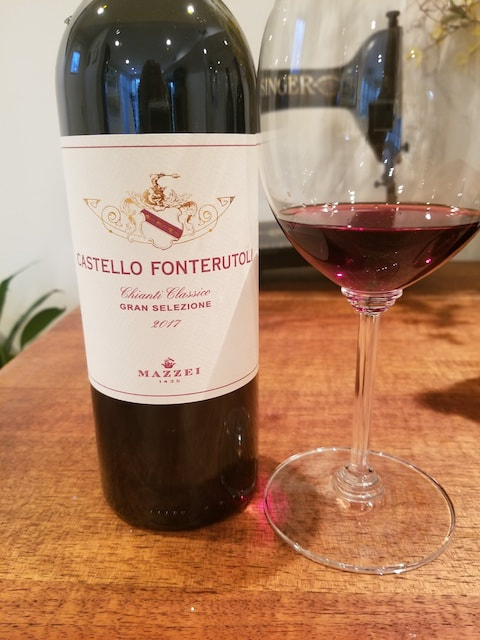
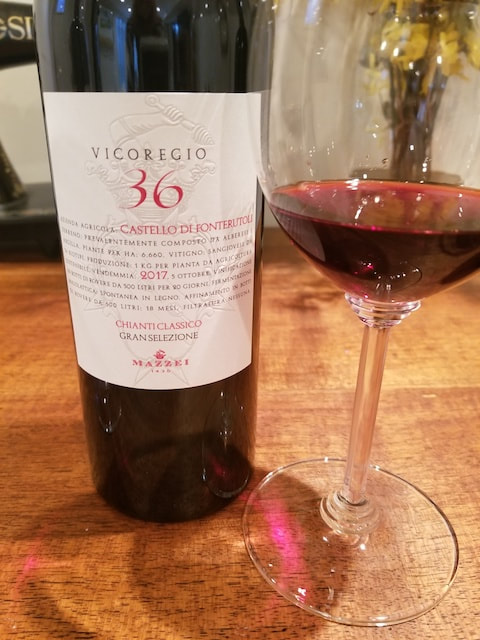
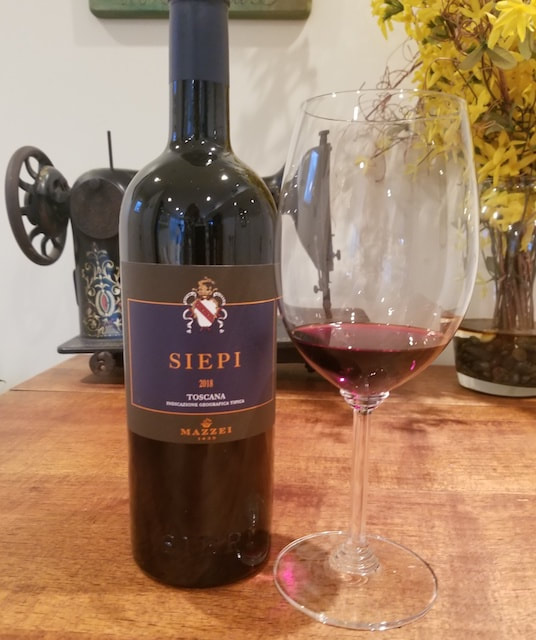

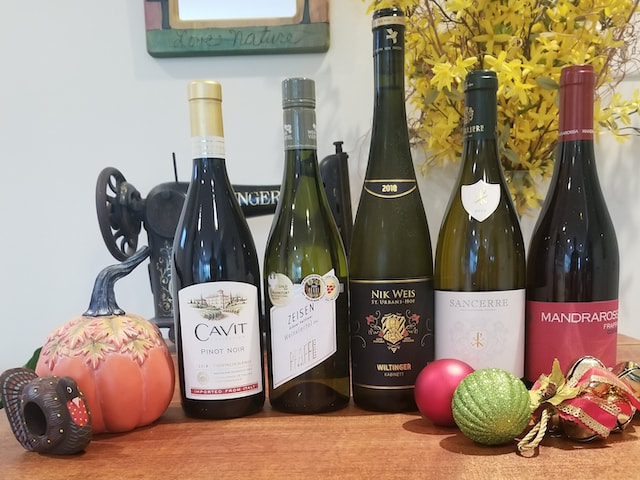
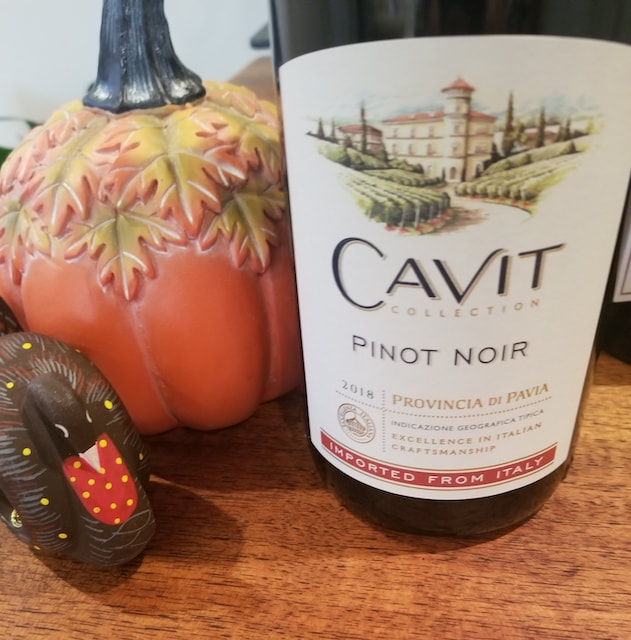
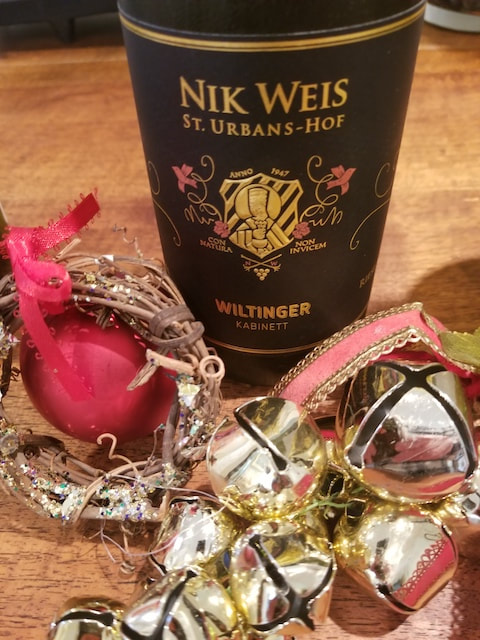
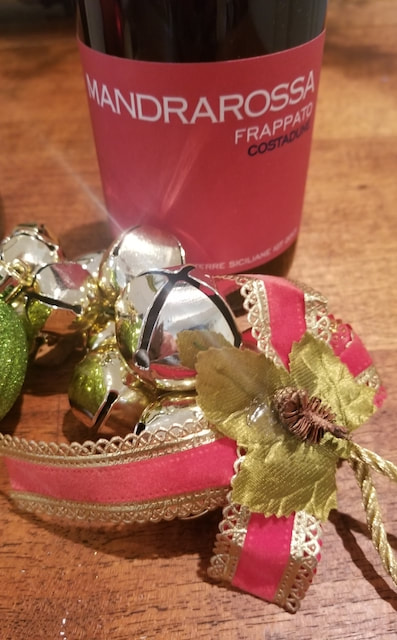
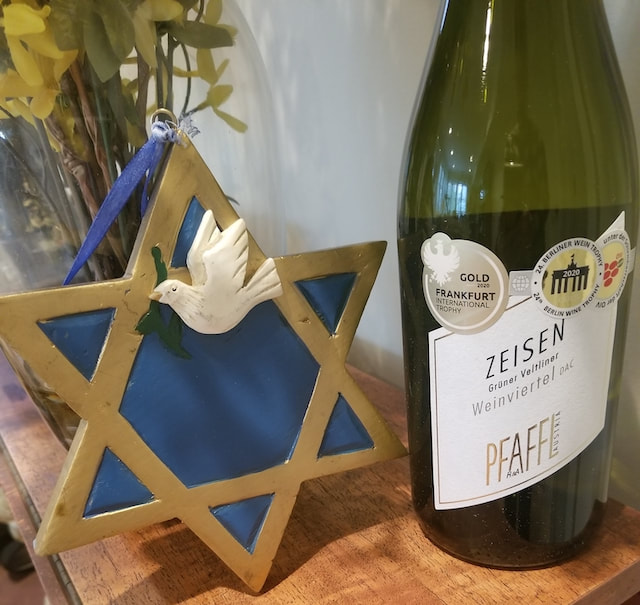
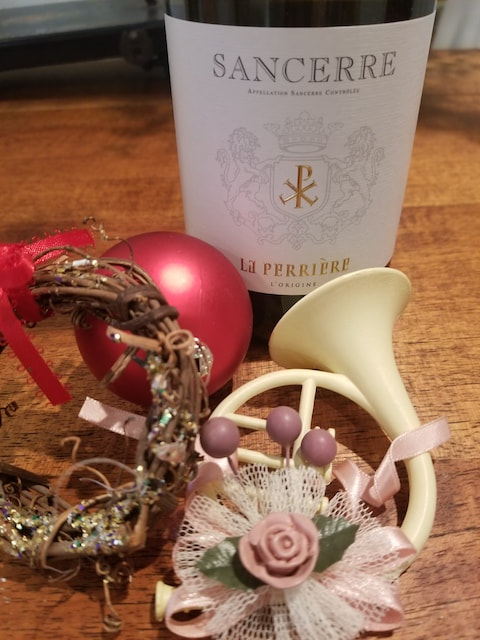
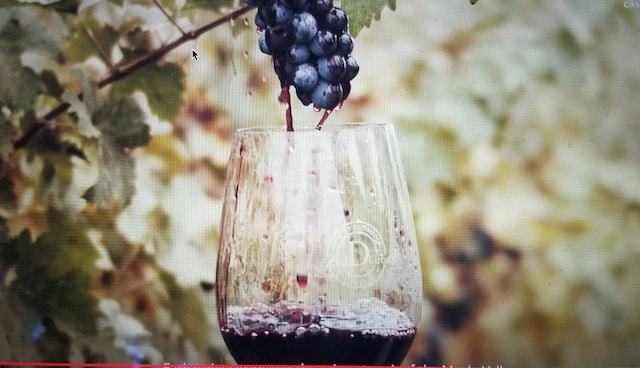
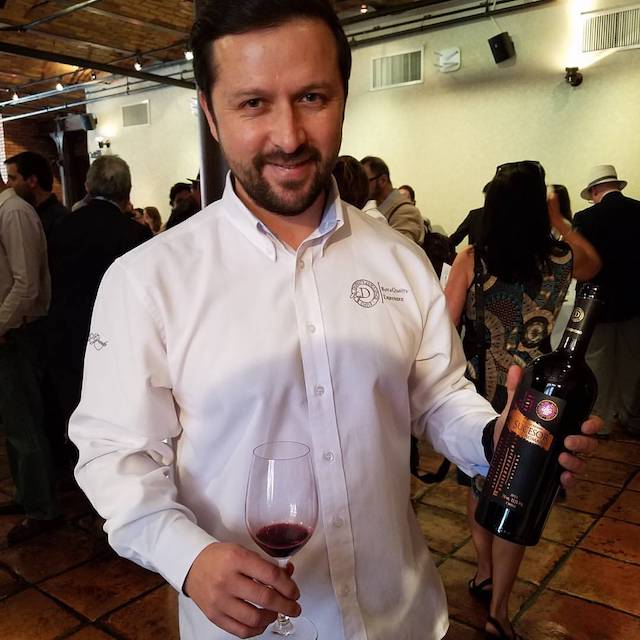
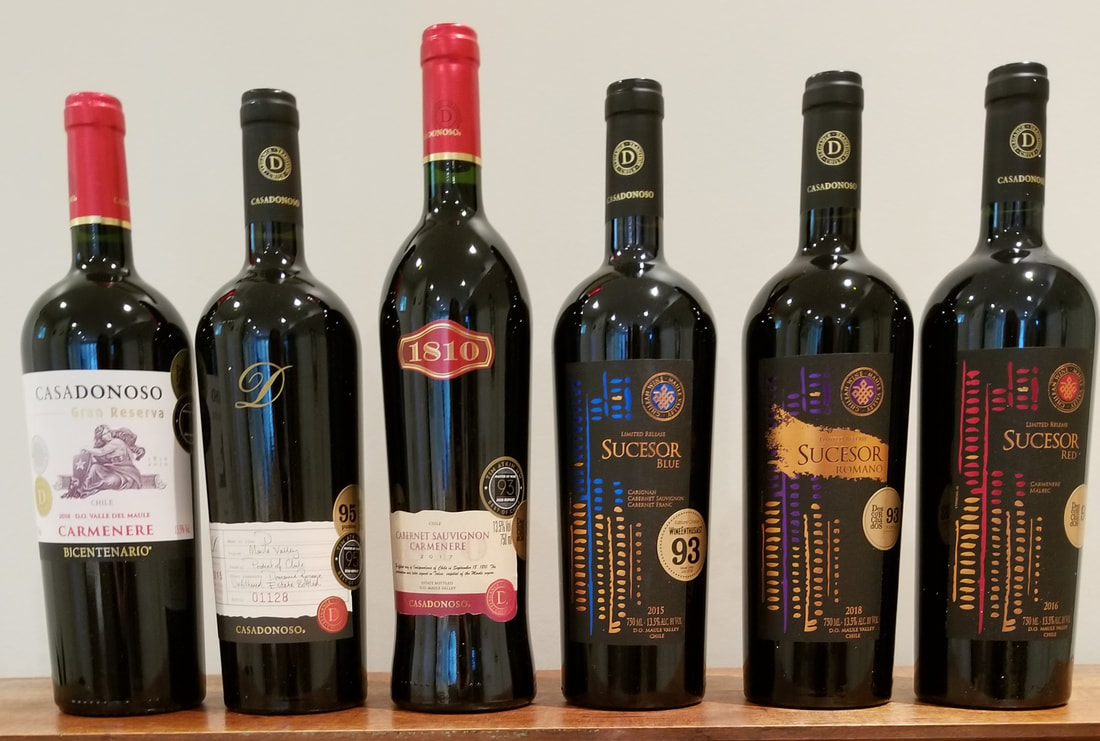
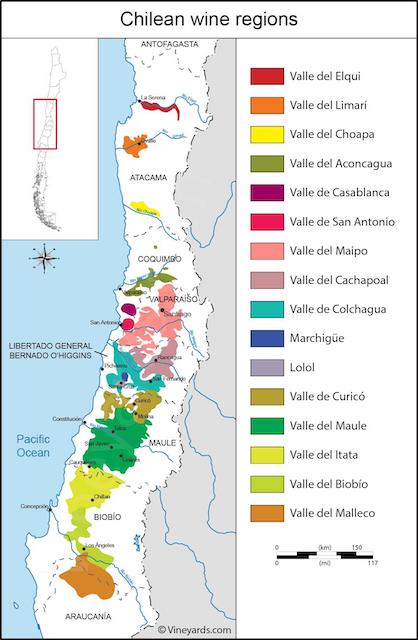
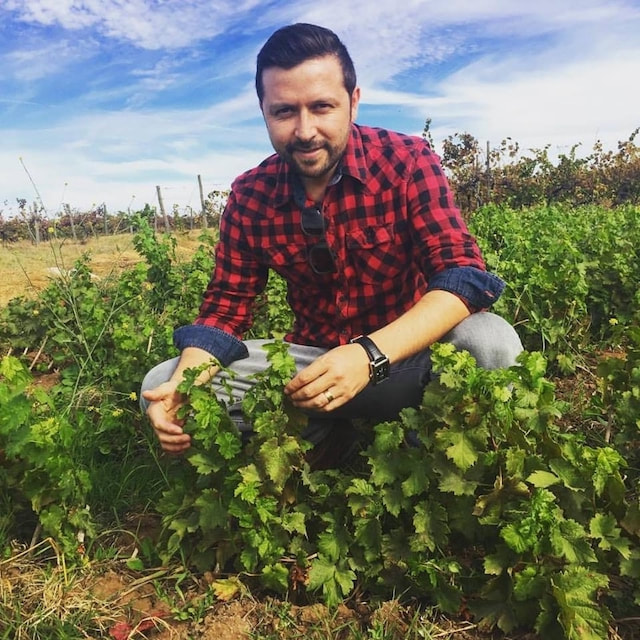
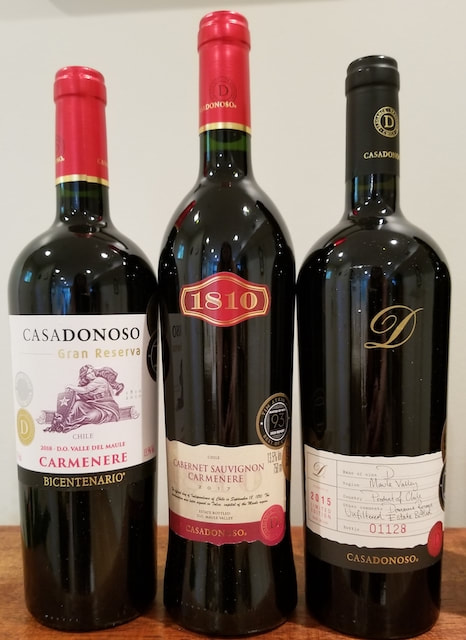
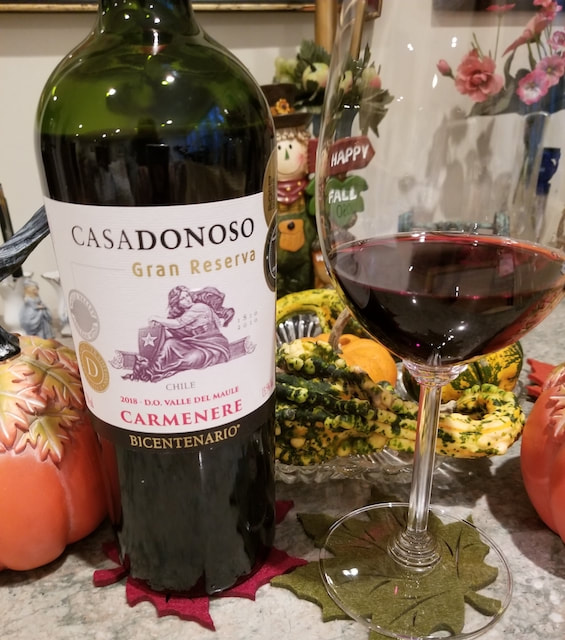
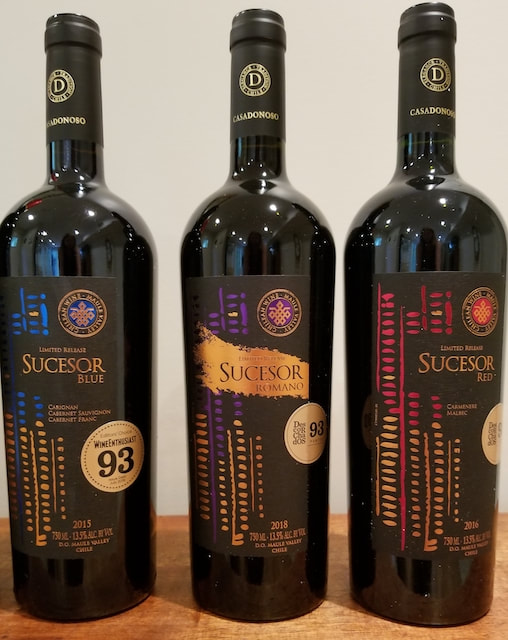
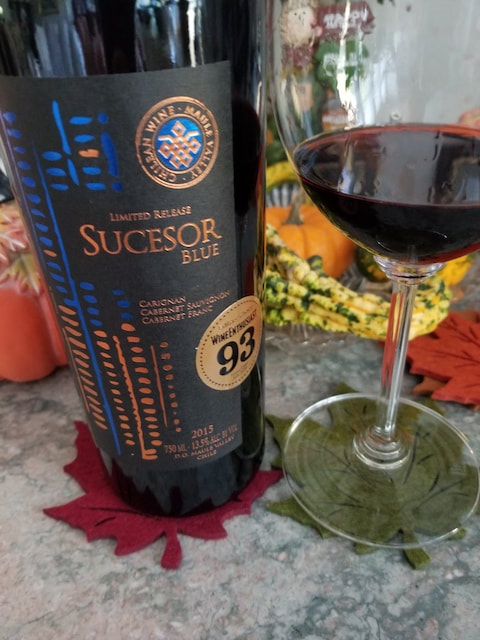
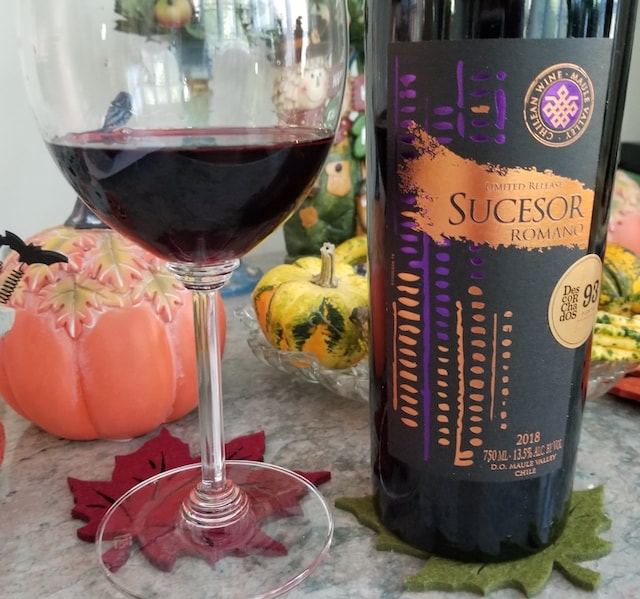
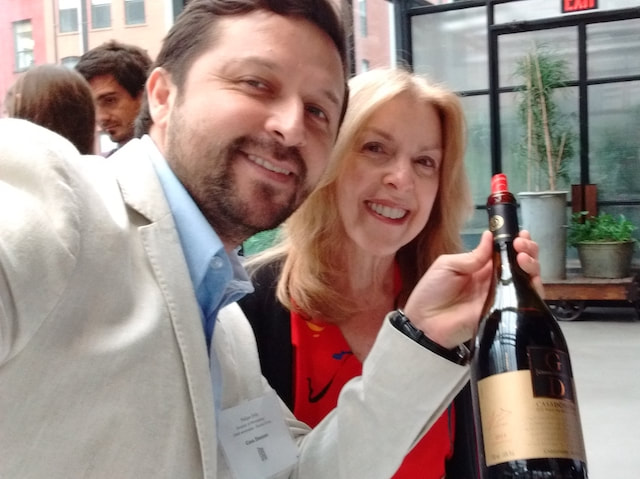
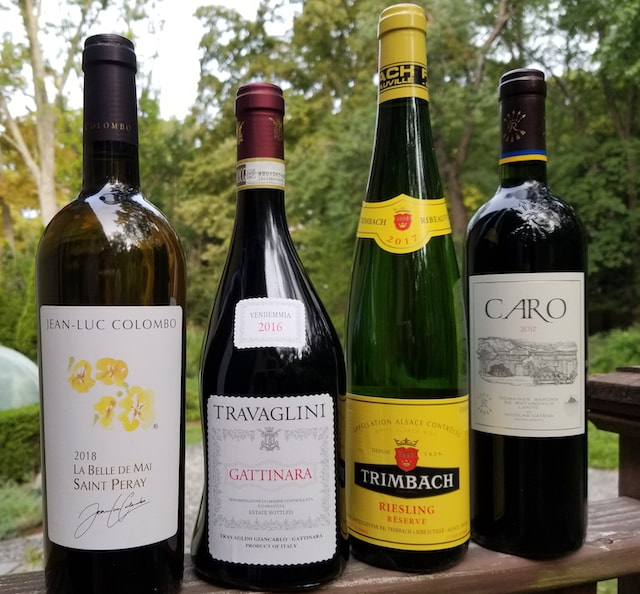
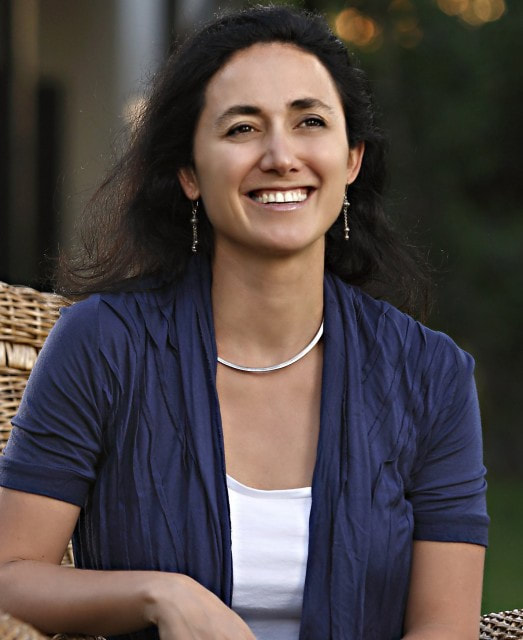
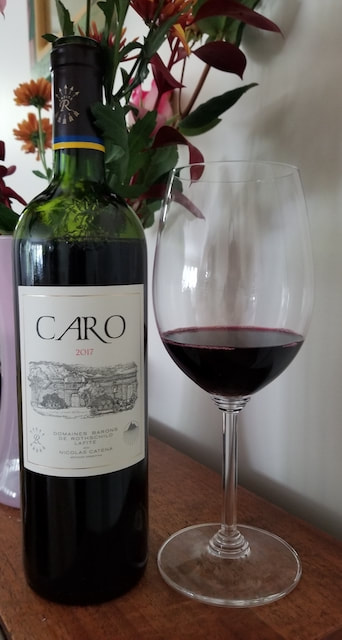
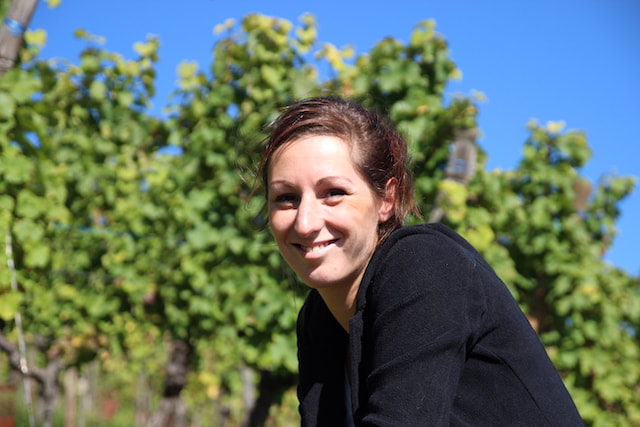
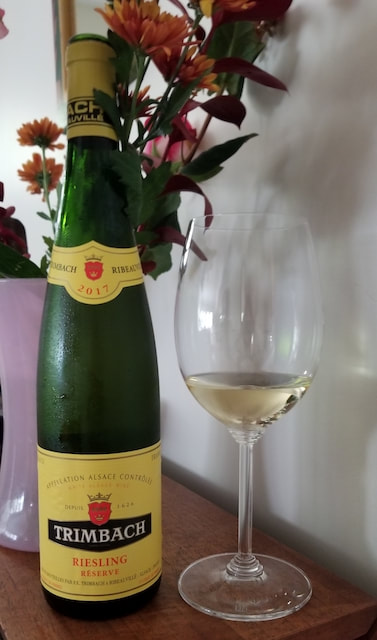
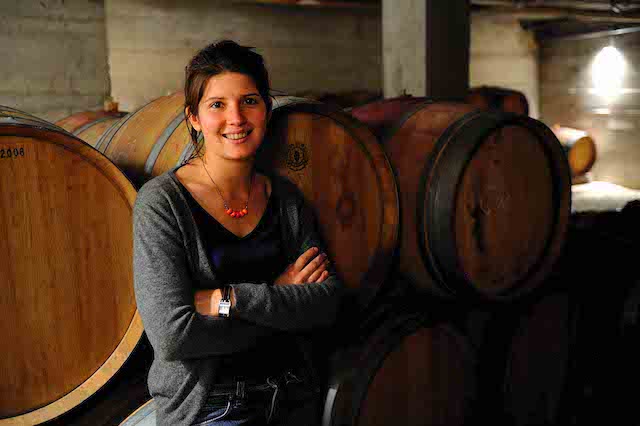
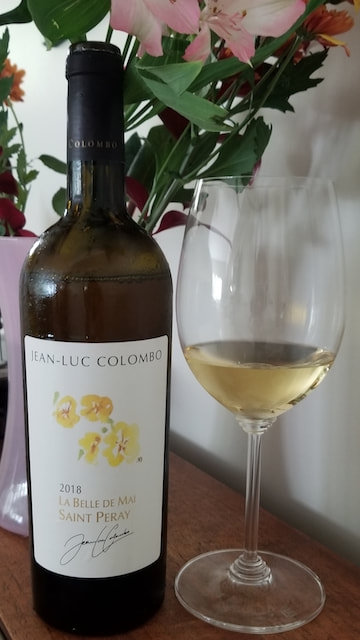
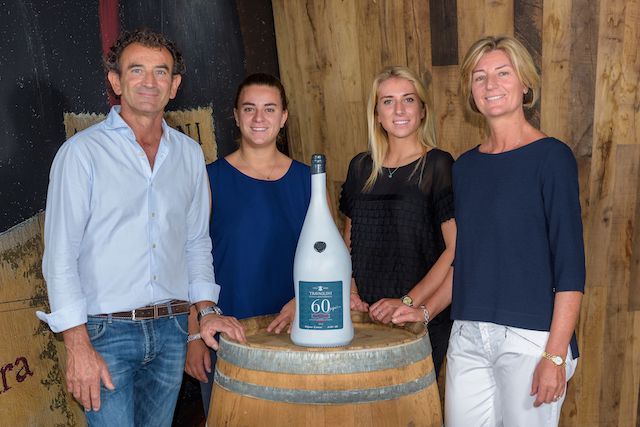
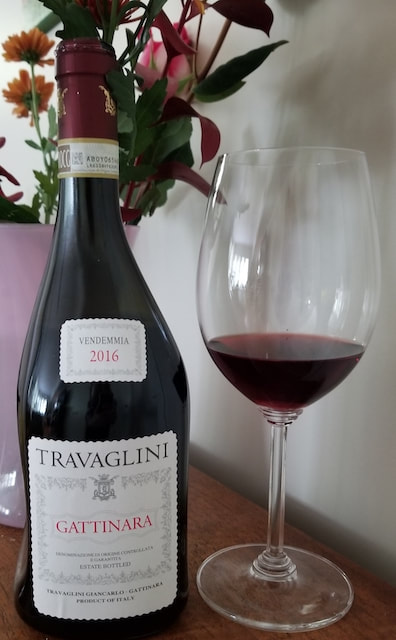
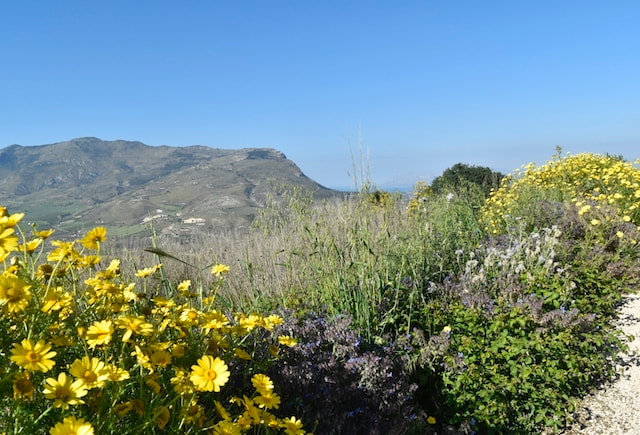
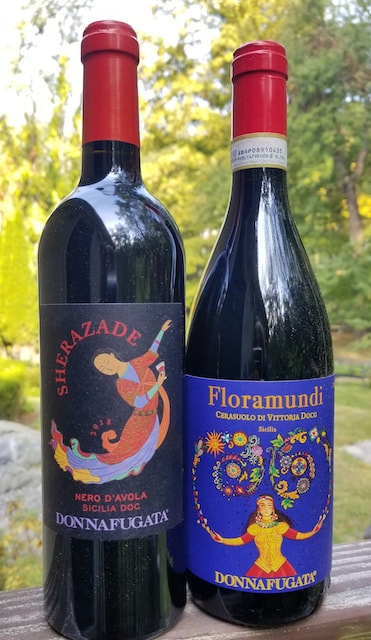
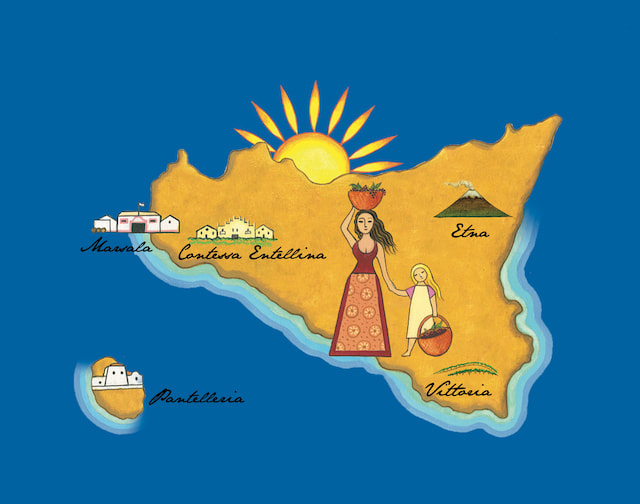
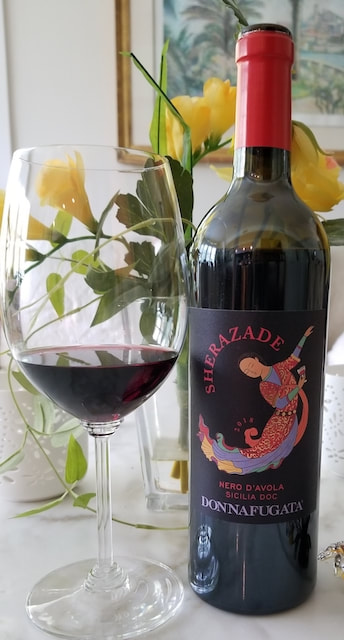
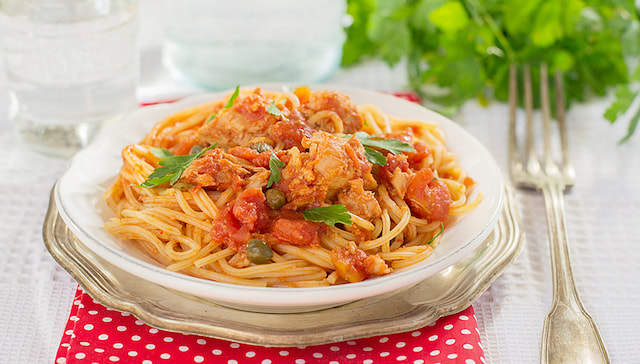
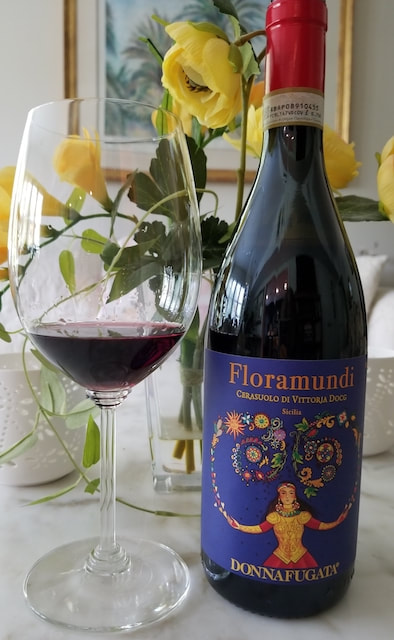
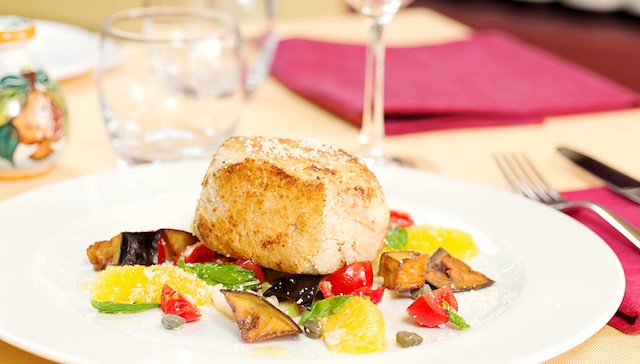
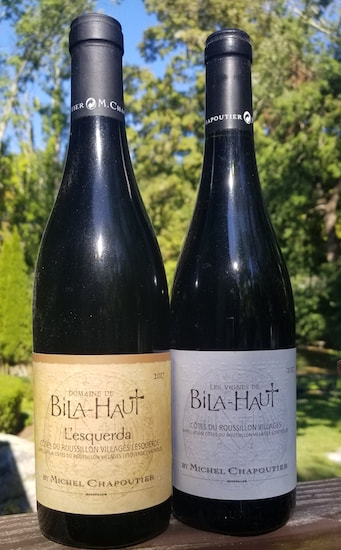
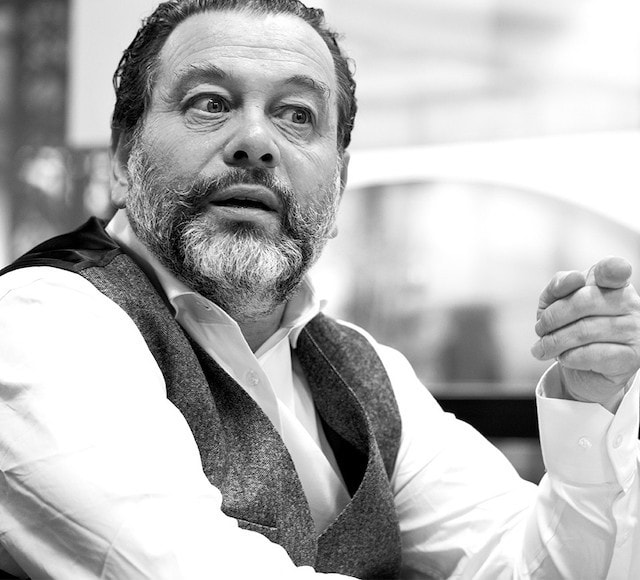
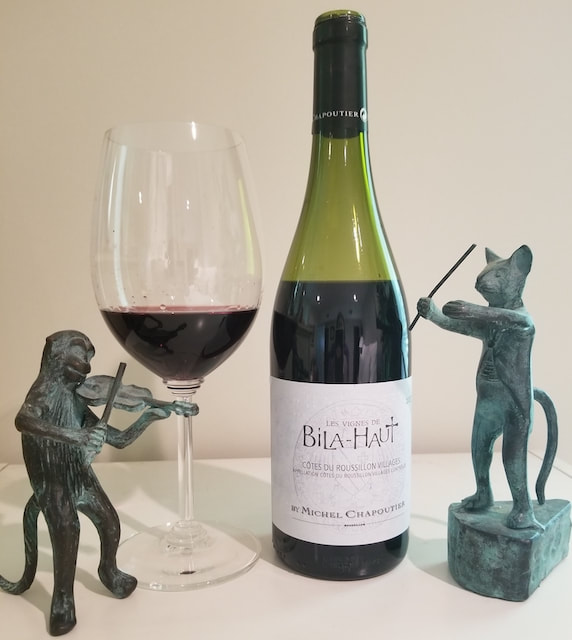
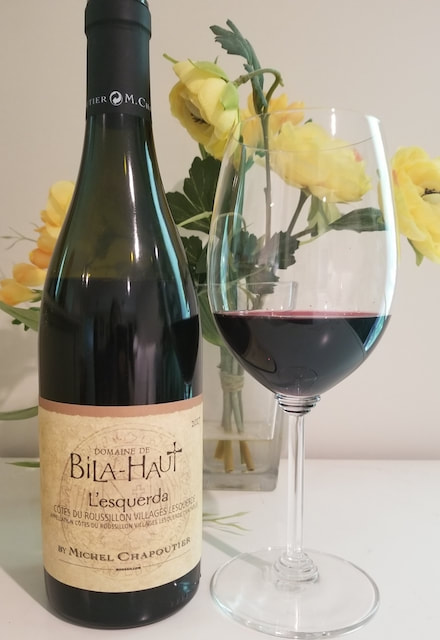
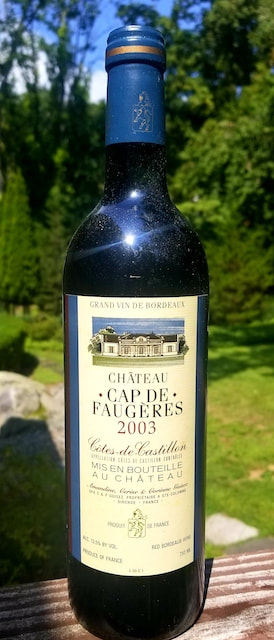
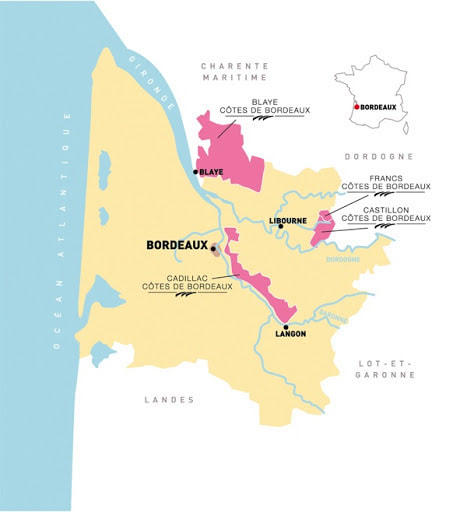
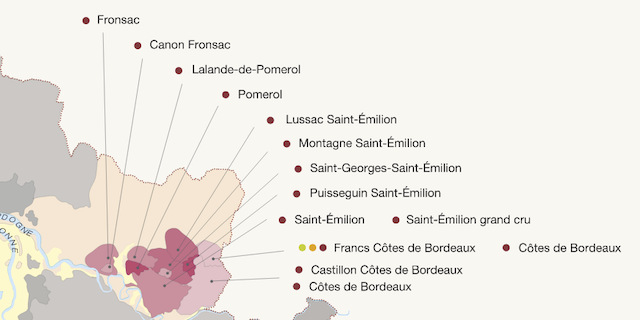
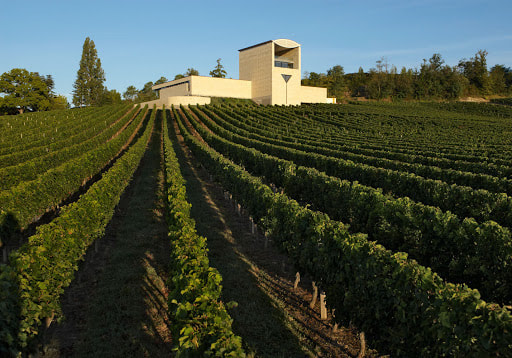
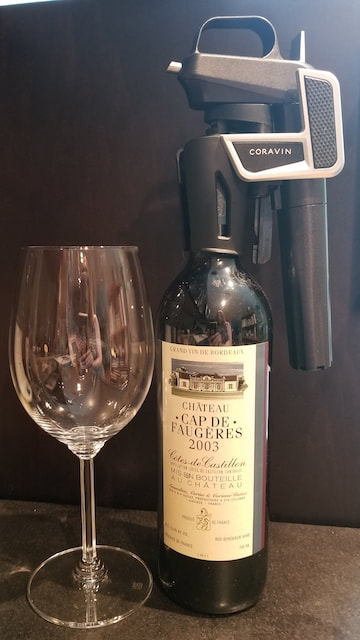
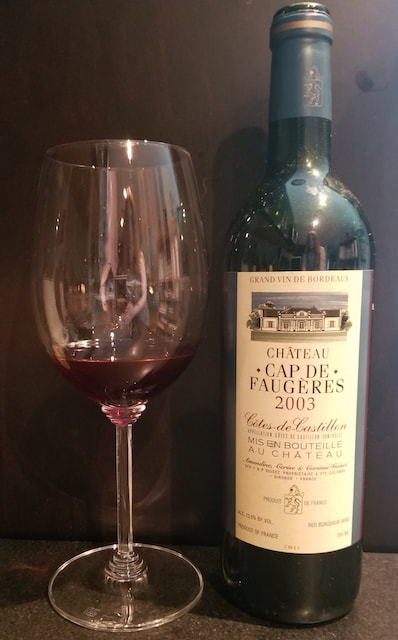
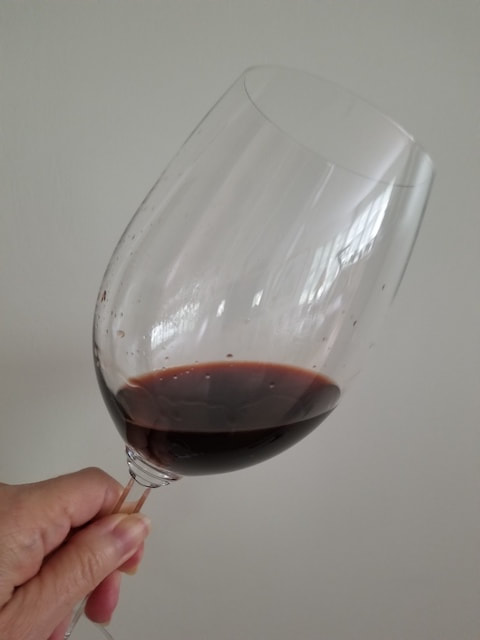

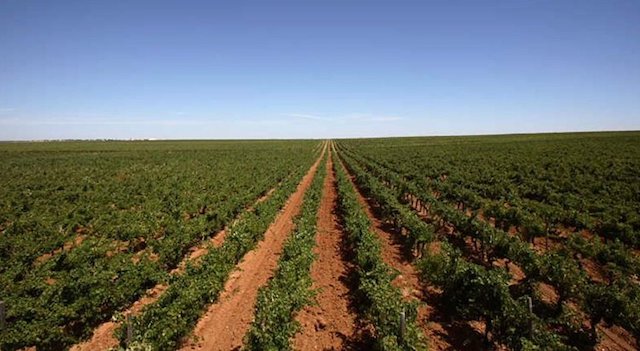
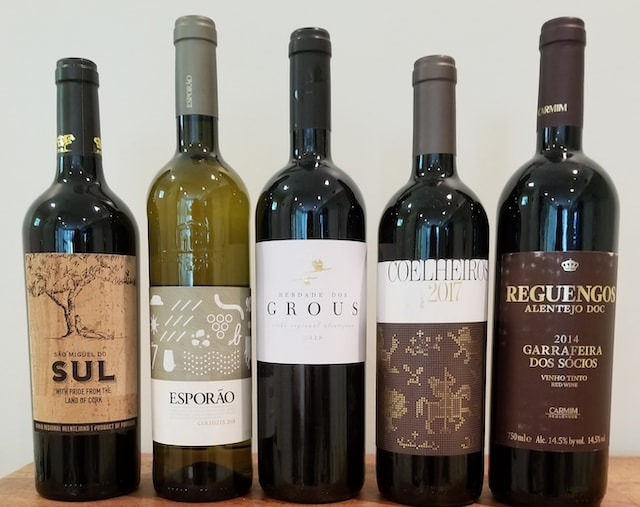
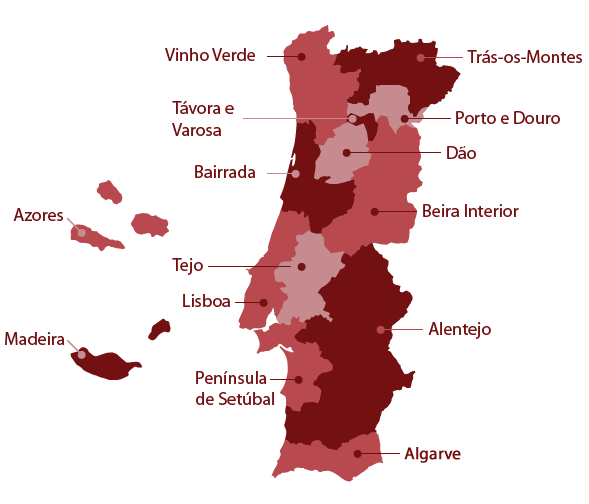
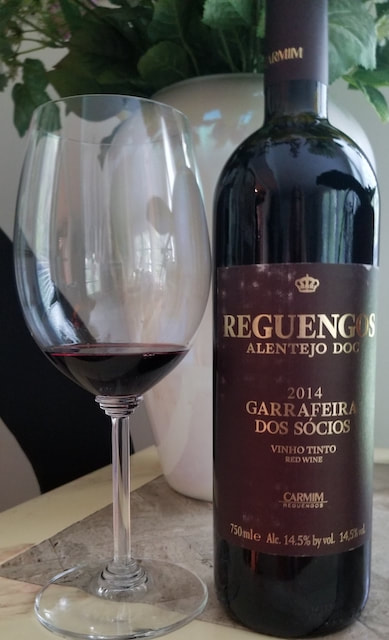
 RSS Feed
RSS Feed